Trek Rail Review | A plush, powerful & frustratingly near-perfect electric mountain bike
The not-so-minor details.
Trek Rail 9.8 XT
https://www.trekbikes.com
From $7,499 AUD ($12,499 AUD as tested)
- Incredible suspension performance - Hugely confidence-inspiring ride quality - Powerful & intuitive Bosch Smart System - Big battery offers big range potential - Powerful brakes - Solid wheels & tyres
- Battery mount failure - Longer wheelbase has reduced agility - Seat angle could be steeper - Limited size range

Justin & Dan review the Trek Rail
Since it was introduced back in 2019, the Trek Rail has joined the likes of the Specialized Levo, Merida eOne-Sixty and Norco Sight VLT as one of the stalwarts of the Aussie e-MTB scene. Available in alloy and carbon across a wide range of price points, and powered by the excellent Bosch Performance Line CX motor, the Rail has grown to become a very popular electric mountain bike.
We last reviewed a carbon Trek Rail 9.8 in 2019 and an alloy Trek Rail 9 in 2021 . Though they weren’t perfect, we were mighty impressed by the quality of the suspension and the balanced handling. Trek has since updated the Rail lineup, incorporating a suite of improvements that are designed to take its technical prowess to a whole new level. To see how all the changes play out on the trail, we got our hands on this shiny Trail Rail 9.8 XT to put through the wringer.
Watch our Trek Rail video review here:
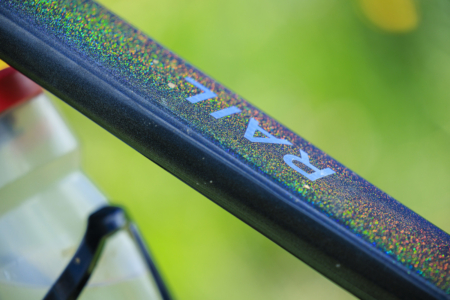
For a full-powered e-MTB with dual 29in wheels, the Rail is arguably one of the best-handling bikes in its category.
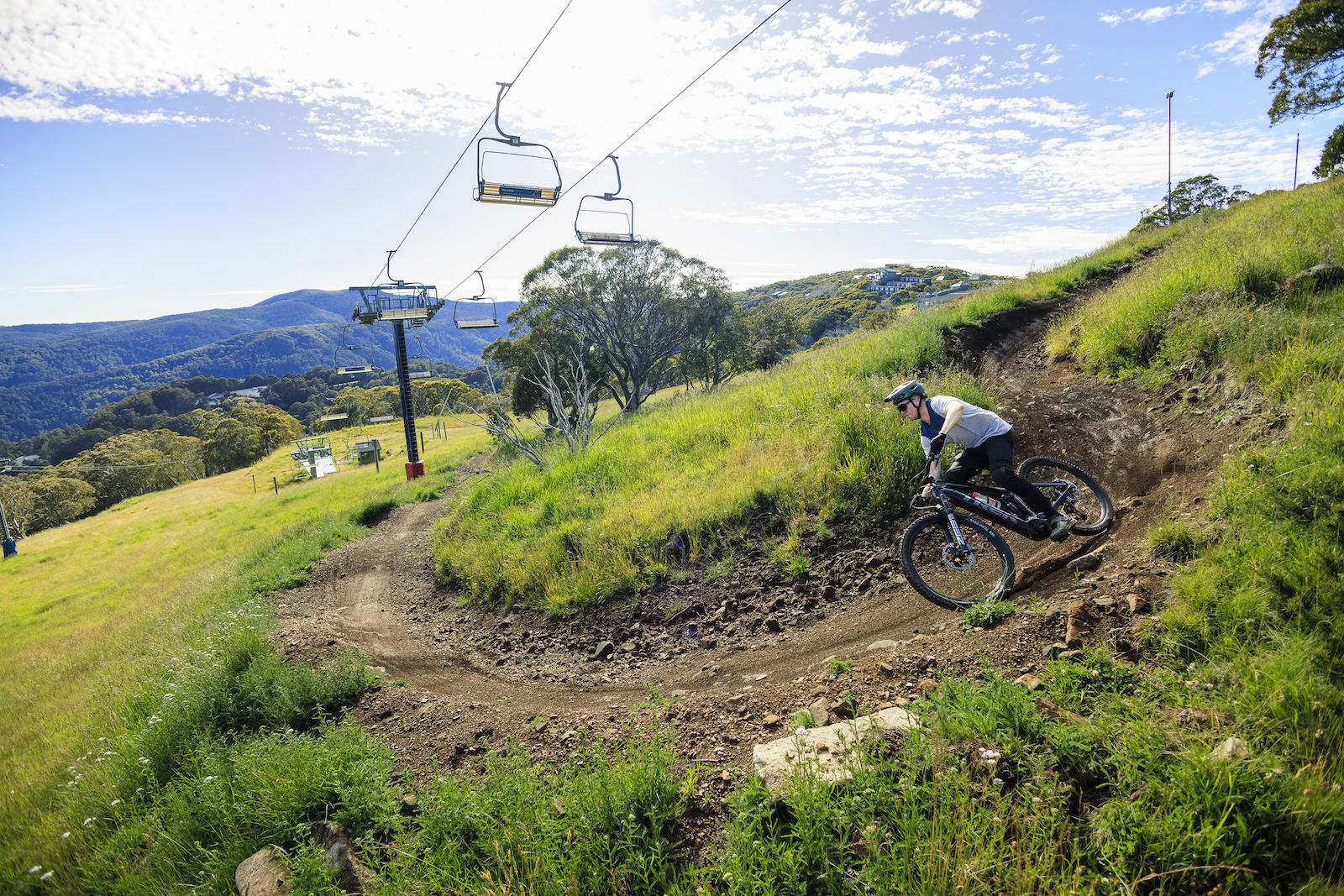
An overview of the Trek Rail
Designed to cover everything from backcountry trail riding through to e-Enduro racing, the Trek Rail features a 160mm travel fork and 150mm of rear wheel travel. It comes fitted with 29in wheels, though by flipping the Mino Link into the High position, Trek says you can run the Rail as a mullet with a 27.5in rear wheel.
As with almost every Trek full suspension mountain bike, the Rail is built around the ABP four-bar suspension platform. The most rearward pivot is concentric to the thru-axle, which Trek says helps to decouple braking forces from the suspension.
The top models are equipped with a custom RockShox Super Deluxe Ultimate RT3 shock. Codeveloped between RockShox and Trek, this fancy shock features the unique Thru Shaft damper design, and as we’ll discuss shortly, is a big contributor to the Rail’s overall ride quality.
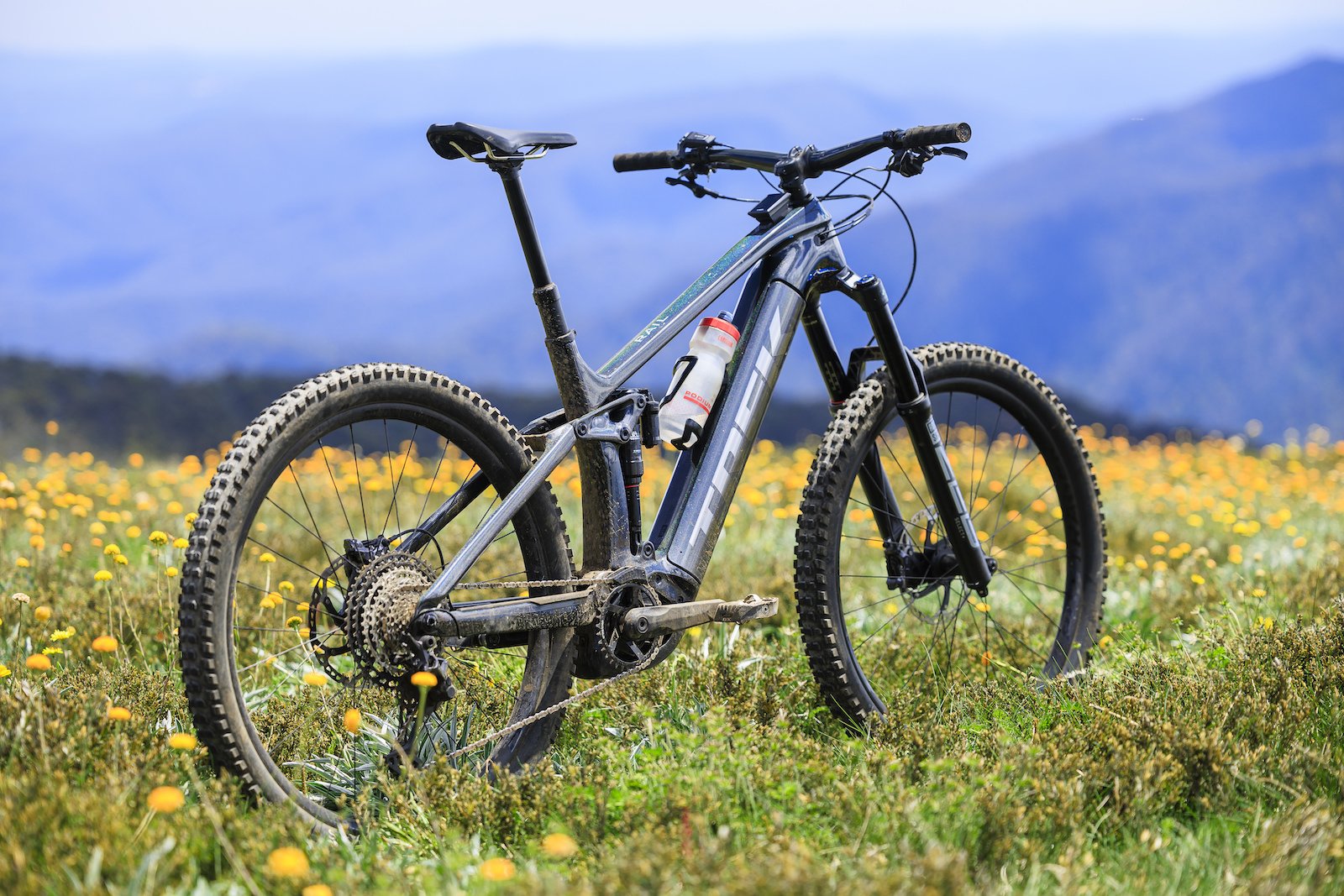
Frame & geometry updates
While the alloy frame remains unchanged, the Trek Rail’s carbon frame has been beefed up significantly.
The seat tube has swollen to a 34.9mm diameter, increasing chassis strength and allowing you to fit a modern long-stroke dropper post. Trek has also adopted the new 1.8in head tube standard to bolster front-end stiffness, while improving the proportions with big travel forks like the RockShox Zeb and Fox 38.
Also new is the Knock Block 2.0 headset. The steering limiter still prevents the handlebar controls from smacking into the frame, but a larger turning radius means it’s entirely unnoticeable on the trail.
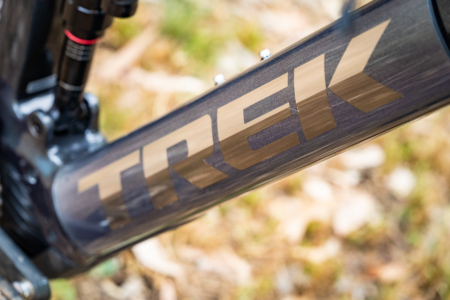
Along with the beefier frame, Trek has also updated the Rail’s geometry. The most significant change is the seat tube angle, which steepens by almost two degrees to 76.7°. The reach has increased, growing by 12-22mm depending on the frame size, and the head angle is also a hair slacker at 64.2° in the Low geometry setting.
One number that hasn’t changed is the 448mm rear centre length, which is about as short as you’ll find for a 29er fitted with a Bosch motor. In comparison, the Scott Patron gets a 454mm rear centre, while the Avanti Hammer-E LT comes in at 462mm.

Bosch smarts
The latest carbon Trek Rail also updates to the Bosch Smart System. The tidy Kiox 300 display is tucked out of the way behind the headset, while the LED controller sits next to the left-hand grip.
Powering the Rail is the Bosch Performance Line CX motor and a 750Wh PowerTube battery. You can charge the battery in situ, or it can be easily removed from the frame with a key for charging separately.
Compared to previous generation Bosch systems, the latest Smart System provides you with far greater functionality and the option to tune the motor. If you’re curious to learn more about its full potential, check out our Bosch Tuning Tips article for everything you need to know.
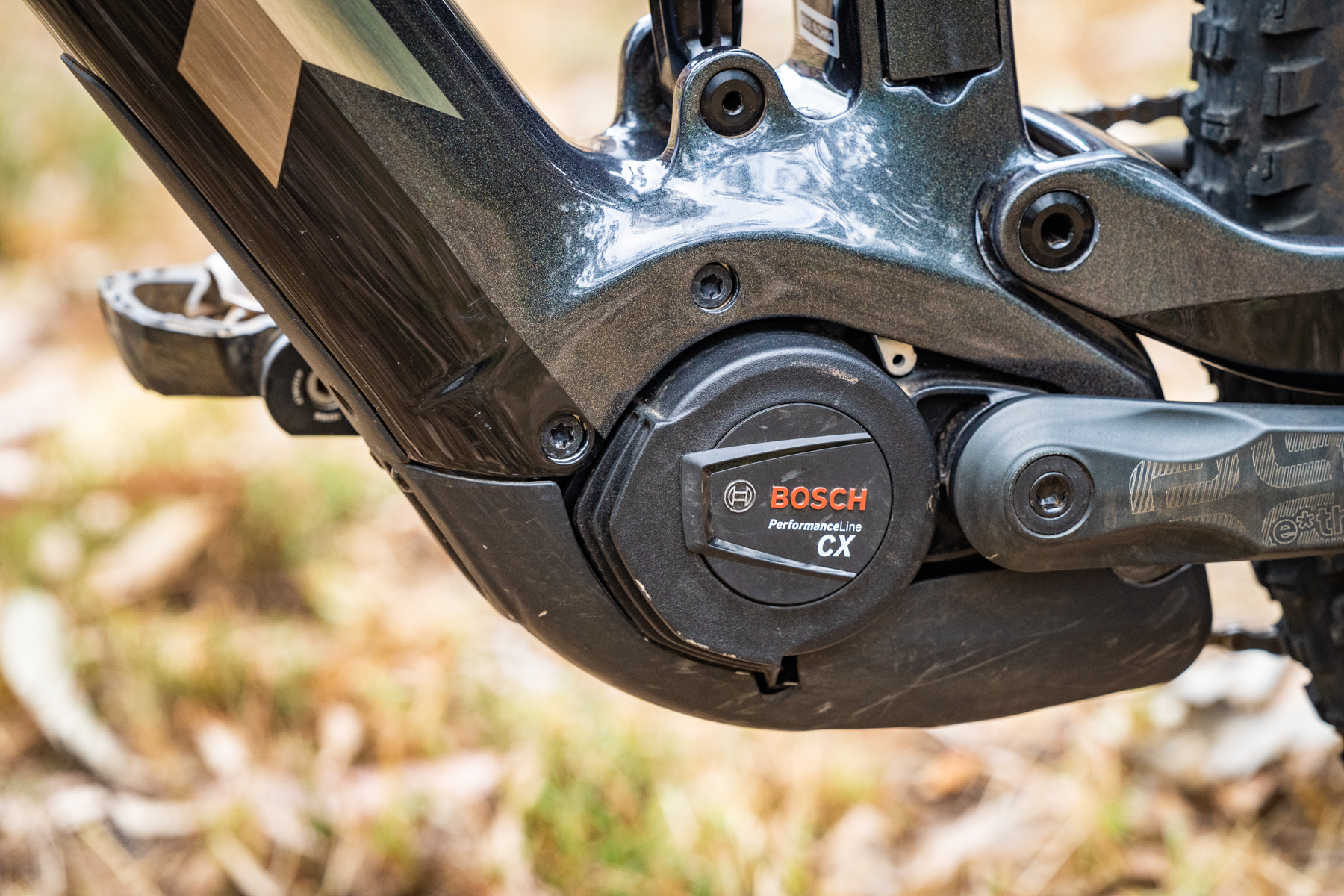
Trek Rail price & specs
There are five models in the current Trek Rail lineup; two with alloy frames and three with carbon frames.
Prices kick off at $7,499 AUD for the Trek Rail 5, which is pretty good for a Bosch-equipped bike. However, it’s worth noting that the alloy models do carry over the previous generation frame, which uses a smaller 500Wh or 625Wh battery along with an older display and controller.
On the other side of the price spectrum is the Trek Rail 9.9 XTR, which sells for $15,999 AUD. This model is also available to customise through the Project One bike builder, for those who want something a little different to the norm.
As blingy as the 9.9 model is, we’re not particularly interested in the additional electronic gizmos it comes with. Instead we requested the Trek Rail 9.8 XT to review, as we think this is the bike that more people are likely to purchase. Despite selling for $3,500 less, it still features the same carbon frame, rear shock and Bosch Smart System as the 9.9 model, albeit with a more practical parts spec.

What about the 2023 Trek Rail?
It’s worth acknowledging that since receiving our 2022 test bike, Trek has quietly introduced some updates for the 2023 iteration of the Rail.
These changes are predominantly based around the user interface, with the alloy Rails updating to the Bosch Smart System with the LED controller and Kiox 300 display. The carbon Rails will then come with the newer Mini Remote and System Controller. Otherwise the frames, motors, batteries, and the majority of the component spec will be identical between the 2022 and 2023 models.
For those eager to wait for a 2023 Trek Rail model, we’ve been informed that stock will begin arriving in Australia in April.

2022 Trek Rail 9.8 XT
- Frame | OCLV Mountain Carbon, ABP Suspension Design, 150mm Travel
- Fork | RockShox Zeb Select+, Charger 2.1 RC Damper, 44mm Offset, 160mm Travel
- Shock | RockShox Super Deluxe Ultimate RT3, 230×57.5mm
- Drive Unit | Bosch Performance Line CX, 85Nm
- Battery | Bosch PowerTube 750Wh
- Wheels | Bontrager Line Comp, 30mm Inner Width
- Tyres | Bontrager SE6 Team Issue 2.5in Front & SE5 Team Issue 2.5in Rear
- Drivetrain | Shimano XT 1×12 w/e*13 Plus 34T Crankset & 10-51T Cassette
- Brakes | Shimano XT 4-Piston w/203mm Rotors
- Bar | Bontrager Line Pro OCLV Carbon, 27.5mm Rise, 780mm Width
- Stem | Bontrager Line Pro, Knock Block, 45mm Length
- Grips | Bontrager XR Trail Comp Lock-On
- Seatpost | Bontrager Line Elite, Travel: 150mm (M), 170mm (L), 200mm (XL)
- Saddle | Bontrager Arvada
- Confirmed Weight | 23.94kg
- RRP | $12,499 AUD

Testing the Trek Rail
In addition to testing the Trek Rail 9.8 XT on our home trails, this bike has accompanied us along some bigger alpine missions up at Mt Buller in Victoria’s High Country.
Buller has proven to be a terrific environment for a big and burly e-MTB like the Rail, with plenty of entertaining options for gaining elevation and some brilliant purpose-built descents to enjoy on the way back down. Tying it all together are epic views of the surrounding mountains, making this one of our favourite destinations to explore over the summer months.
To give it a proper workout, we took the Rail on a smorgasbord of backcountry singletrack around Buller including the recently refurbished Delatite River Trail, Clancy’s and the absolutely brilliant Stonefly. We also used the Rail to rack up plenty of self-shuttled laps of the gravity trails, including Outlaw and the classic ABOM.
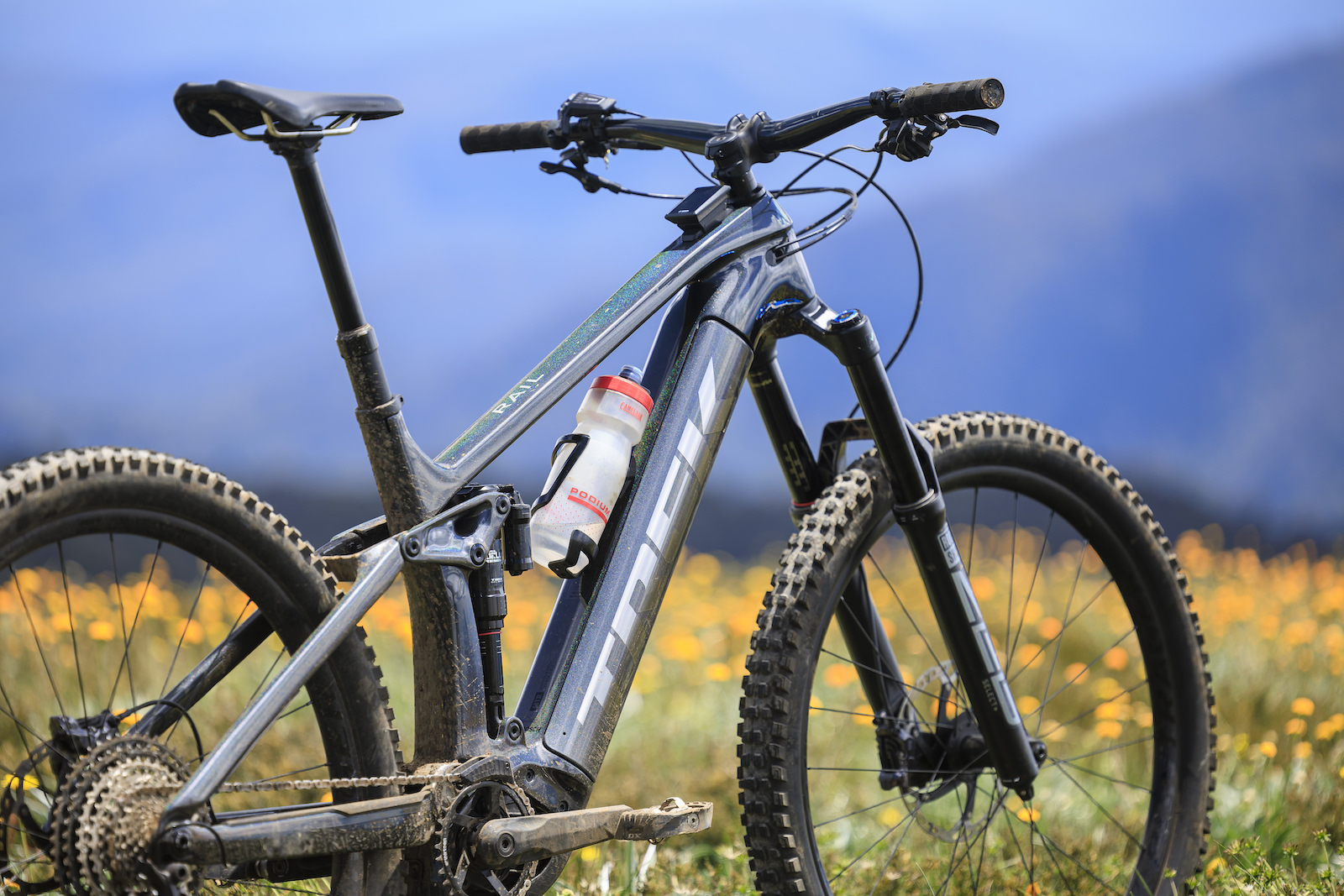
Trek Rail sizing & fit
While models like the Slash and Fuel EX are known for being offered in a huge range of sizes, the carbon Trek Rail models are currently only available in Medium, Large and X-Large sizes in Australia. We’re told that a Small will be arriving later this year, which will come fitted with a 625Wh battery to fit inside its shorter downtube. In the meantime, those after a Small will need to look towards the alloy Rail.
To suit the height of Dan (183cm) and Justin (180cm), we’ve been testing a Large. Compared to the previous model the reach has grown from 465mm to 487mm, which is a significant jump. The steeper seat angle does help to position the rider more centrally within the cockpit, though we reckon it could be a lick steeper since the effective top tube length on this bike is very long.
This presented more of an issue for Dan, who has shorter arms and prefers a more upright climbing position. To suit his proportions and riding style, Dan slid the saddle all the way forwards on the rails to steepen the effective seat angle and shorten the distance to the grips. Justin on the other hand had no such issues with the saddle in the middle of its adjustment range, and found the cockpit to be perfectly comfortable out of the box.
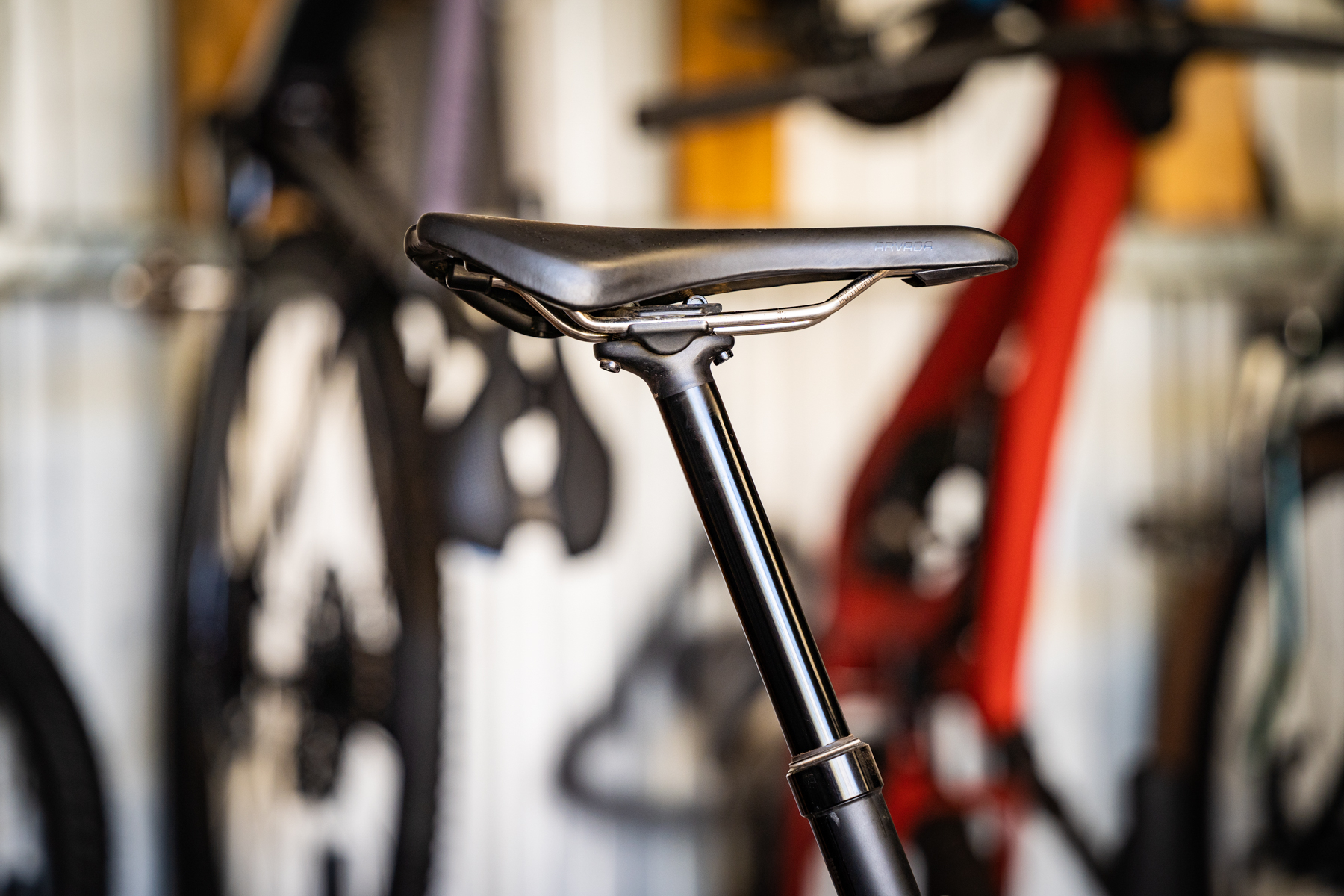
The takeaway from our experience? We’d recommend that anyone on the border between two sizes take a closer look at the geometry chart, as you may want to size down rather than up.
Even with the saddle shunted forwards, the Rail doesn’t suffer from a front-heavy riding position. That’s because the stack height is quite generous, coming in slightly taller than the old model. Combined with the well-proportioned bars, amenable grips and saddle, we’ve found it to be a comfortable bike during long exploratory missions out in the hills.
Suspension setup
Setting up the Rail’s suspension is made easy thanks to Trek’s online calculator , which is a fantastic tool for getting you started with air pressures and rebound settings.
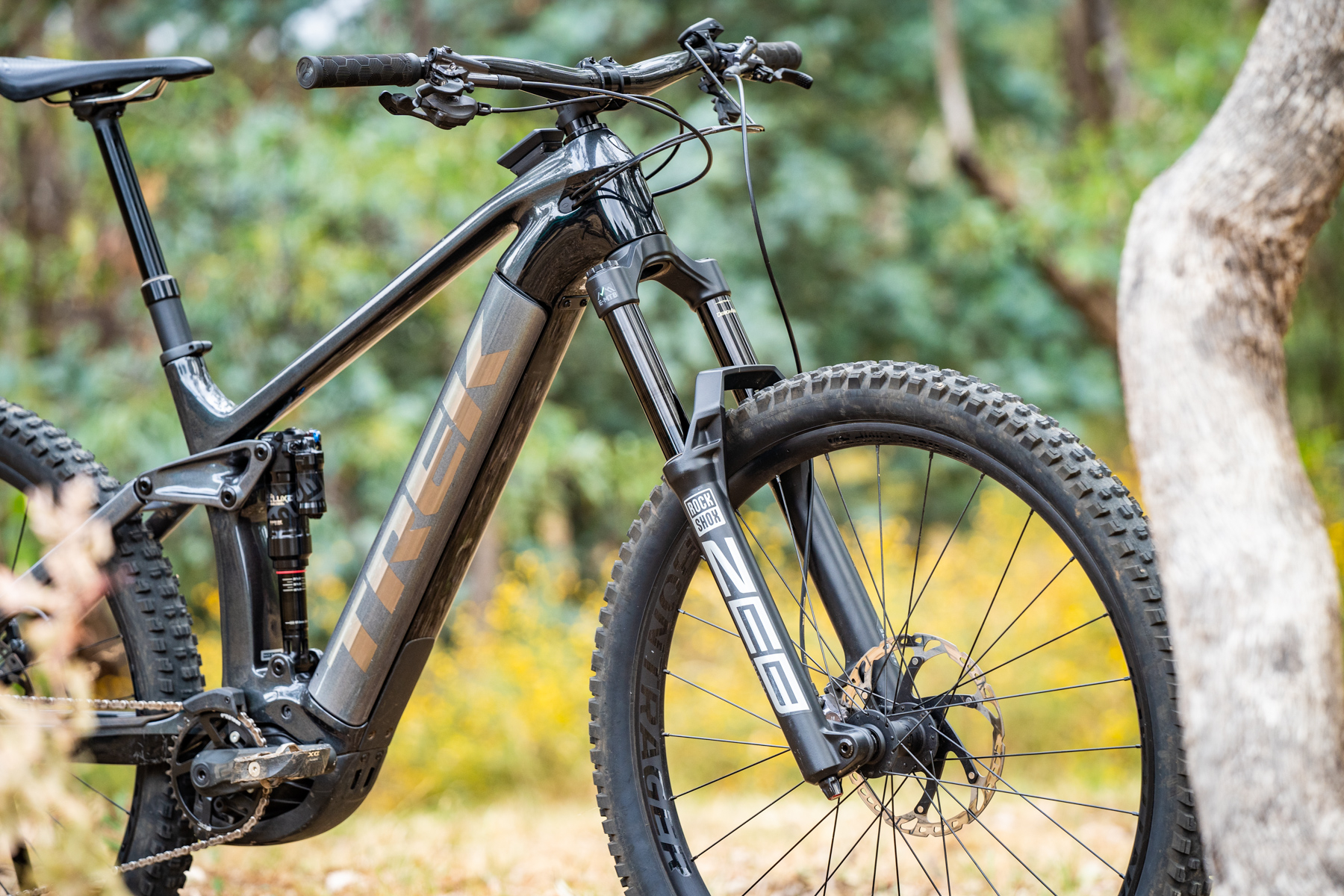
For Justin (85kg), the suggested settings proved to work well right off the bat. In comparison, Dan (83kg) made use of the recommended air pressures but trended towards a faster rebound setting to suit his more aggressive riding style.
There’s plenty of adjustment available with both the Zeb fork and Super Deluxe RT3 shock, which allows you to tweak the damping to suit different trail conditions. In particular, the 3-position compression dial on the rear shock makes a notable change to rear end grip and support, so we’d recommend experimenting with all three settings.
Once set up to preference, we didn’t need to touch the suspension at all throughout the test period. Bigger riders or those who are particularly heavy on their landings may want to fit an extra volume spacer in the rear shock to increase bottom-out support, but the stock setup will likely work well for most.
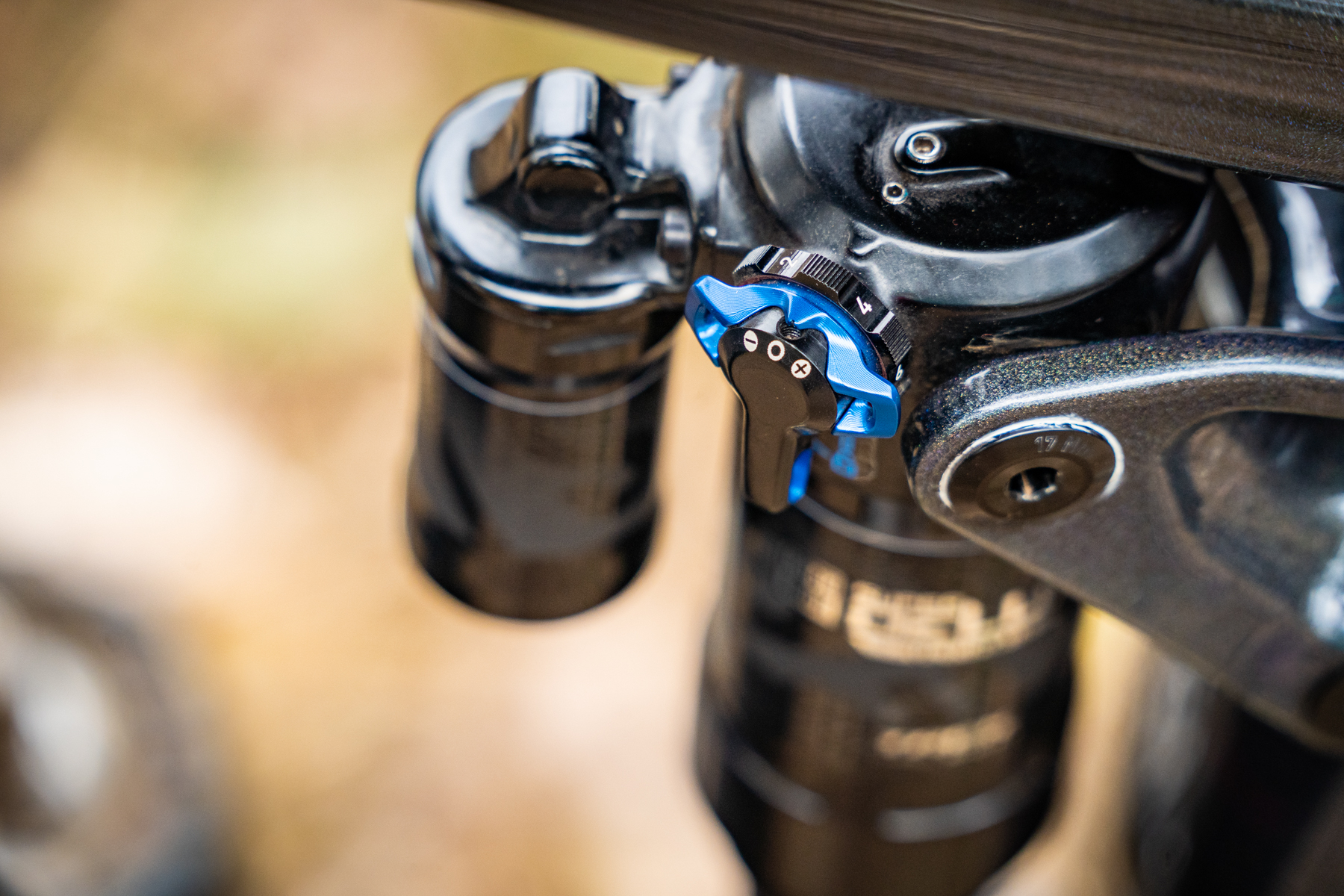
Trek Rail weight
Without pedals and with the tyres setup tubeless, our Trek Rail 9.8 XT test bike came in at 23.94kg.
That’s a little heavier than claimed, though it’s a reasonable figure for a big travel e-MTB with a 750Wh battery. If you’re particularly concerned about weight, you might want to look towards the mid-powered Trek Fuel EXe , which is over 5kg lighter.
Although the Bontrager SE6 and SE5 tyres use reinforced Core Strength casings, at just over a kilo each they’re significantly lighter than a full-blown DH tyre. Factoring in the abuse we’d likely be dishing out on the Rail, we fitted a CushCore Pro insert into the rear wheel to help ward off potential punctures and rim damage. Tyre pressures were set between 21-24psi up front, and 24-26psi out back.
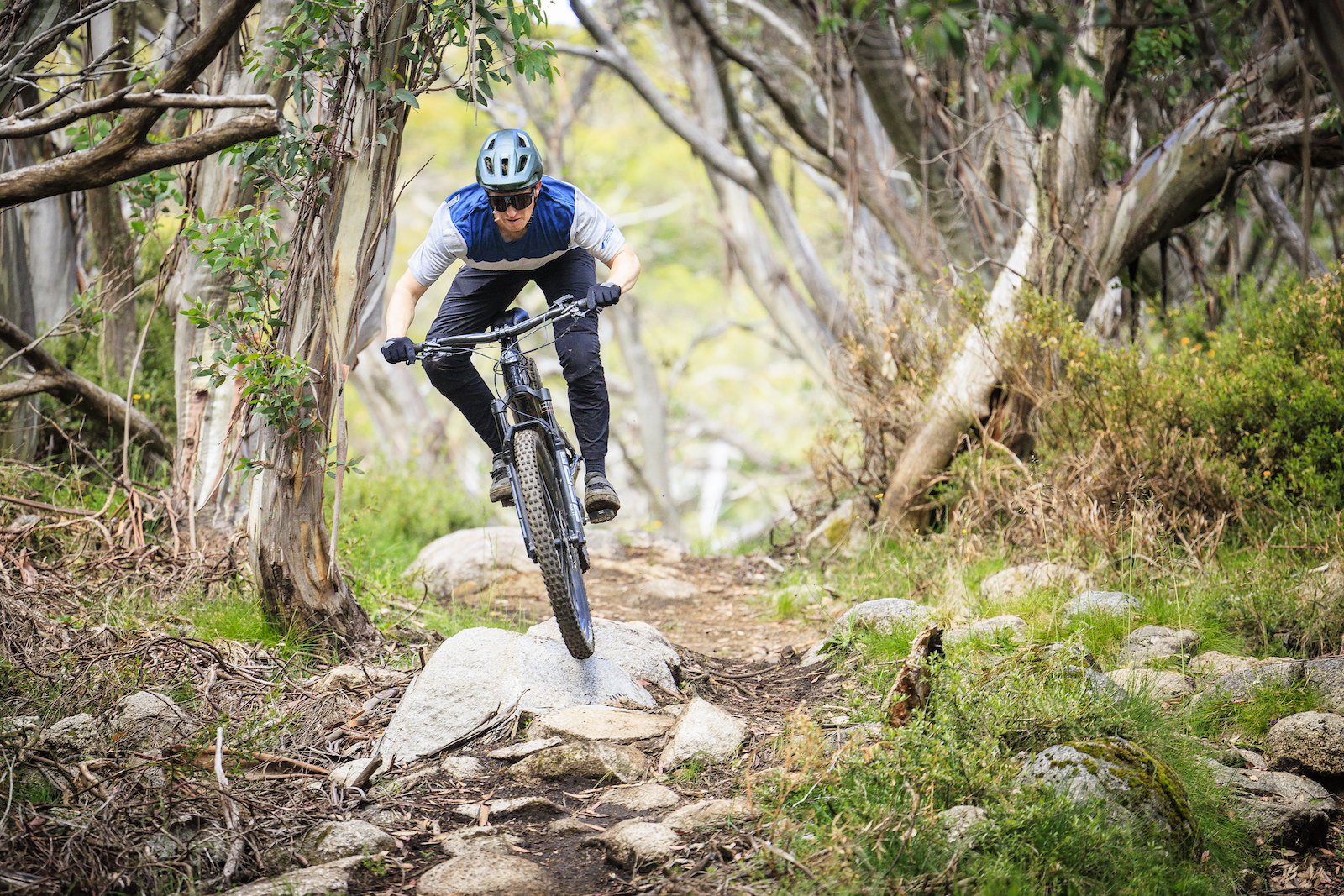
What do we dig about the Trek Rail?
As with previous models, we’ve been consistently impressed by the outstanding suspension performance on the new Trek Rail. This bike is beautifully balanced, offering great small-bump sensitivity while still delivering heaps of support. Along with the powerful brakes, aggressive tyres and long wheelbase, you can ride this bike bloody hard on some very rowdy terrain.
It has to be said that the Zeb is a perfect match for a burly bike like the Rail. An e-MTB is inherently more difficult to correct if you push it slightly off-line, with the added weight compounding any mistakes. The Zeb’s stiff 38mm chassis helps to keep the front wheel tracking where you want it, while the sensitive action soaks up off-camber impacts, maximising ground contact for increased grip.

It’s a similar story out back with the custom Super Deluxe shock. Trek says the IFP-less design of the Thru Shaft damper reduces the ‘stick-slip’ effect when the shock is rapidly changing direction between compression and rebound, resulting in smoother and more responsive operation. Given how supple it is back there, it’s hard to argue with that claim.
Combined with the trunnion bearing mount and ABP linkage, the Rail delivers incredible sensitivity across a wide range of impacts and riding speeds. Traction and compliance are superb, with the shock recovering well on rapid-fire impacts. We never fully bottomed out the rear suspension, while the mid-stroke support means the Rail has surprisingly good pep on flowier jump trails. The fact that it ‘only’ has 150mm of rear travel means it doesn’t totally numb the trails like a longer travel e-MTB would.
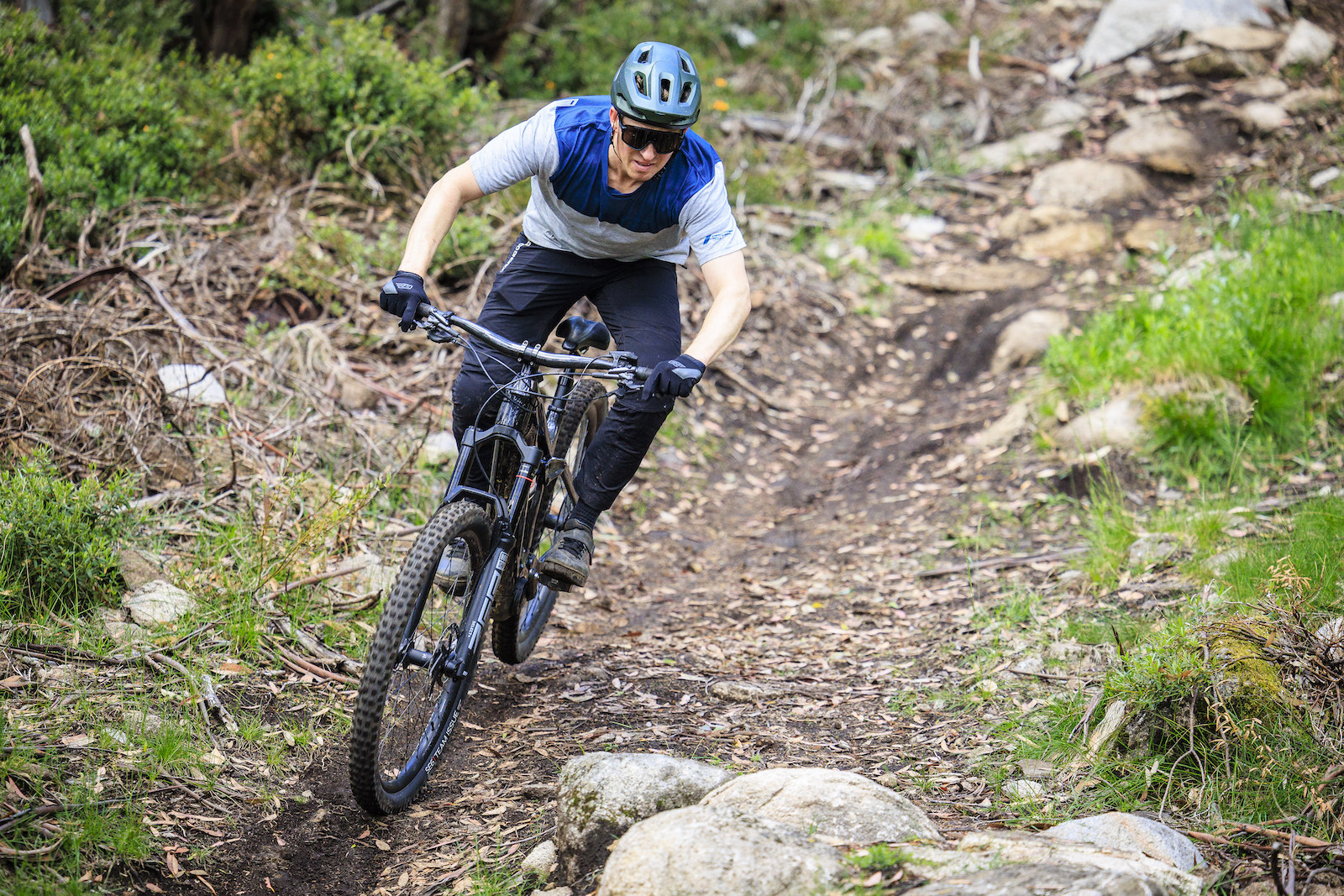
Stout frame & responsive handling
Enhancing the Rail’s enthusiastic on-trail demeanour is its stiff carbon frame, which feels noticeably sturdier and more responsive than previous iterations. Paired to the Zeb up front, the handling is direct and surefooted.
Much like the Canyon Spectral:ON , that chassis stiffness never results in untoward harshness. Indeed the supple suspension, high volume tyres and alloy rims ensure the Rail contours the terrain rather than pin-balling you around.
The short rear end also contributes to the responsive handling, helping to make the Rail feel manageable despite its heft. While a longer rear centre can improve high-speed stability, it tends to make the bike more sluggish and harder to leave the ground. Trek has avoided that sensation with the Rail, with its short chainstays providing a welcome dose of agility. It rips corners confidently, and thanks to the supportive suspension, it’s also more than happy to take to the air.
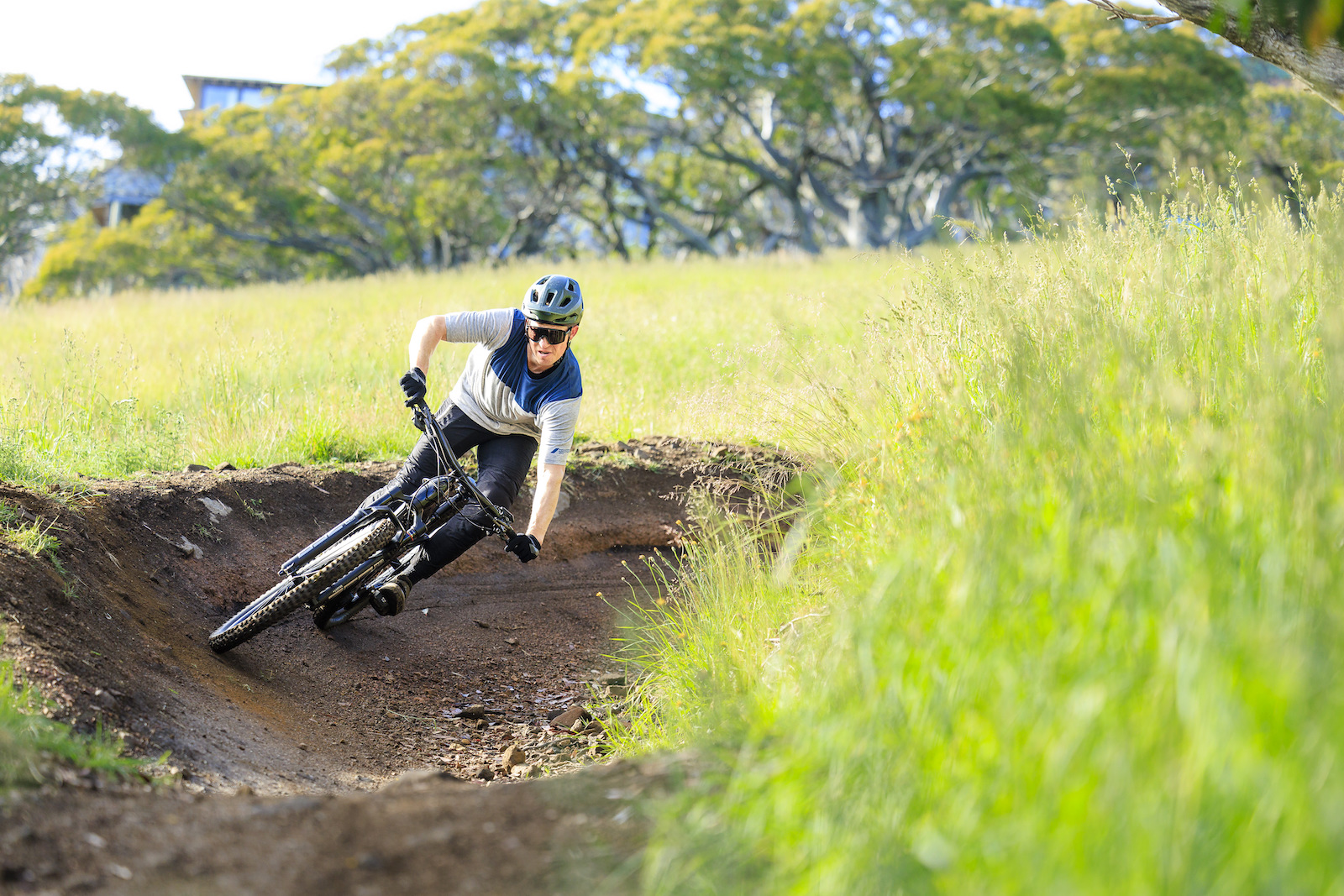
Bosch power & control
Along with its supple suspension and sturdy chassis, the Bosch Performance CX Line motor is another key component to the Trek Rail’s all-round performance. In our experience, this is the best full-powered motor out there.
Set to the adaptive eMTB mode, power delivery is responsive and intuitive. There’s plenty of low-range torque on tap, and the overrun feature means power continues to be applied even if you need to briefly coast over roots and rock ledges on a technical climb.
It’s particularly advantageous for larger-sized riders, with the Bosch motor providing masses of support and powerful acceleration. For lighter riders, bumping the assistance mode down to Tour+ will still provide that intuitively adaptive power output, albeit with a less abrasive punch and a milder overrun.
If you’re willing to make use of the lower powered settings, it’s possible to eke out some serious mileage. Indeed with the big 750Wh battery, you’re unlikely to experience any range anxiety with the Rail. This bike offers proper long-range potential, making it a fantastic option for huge e-MTB adventures out in the mountains.
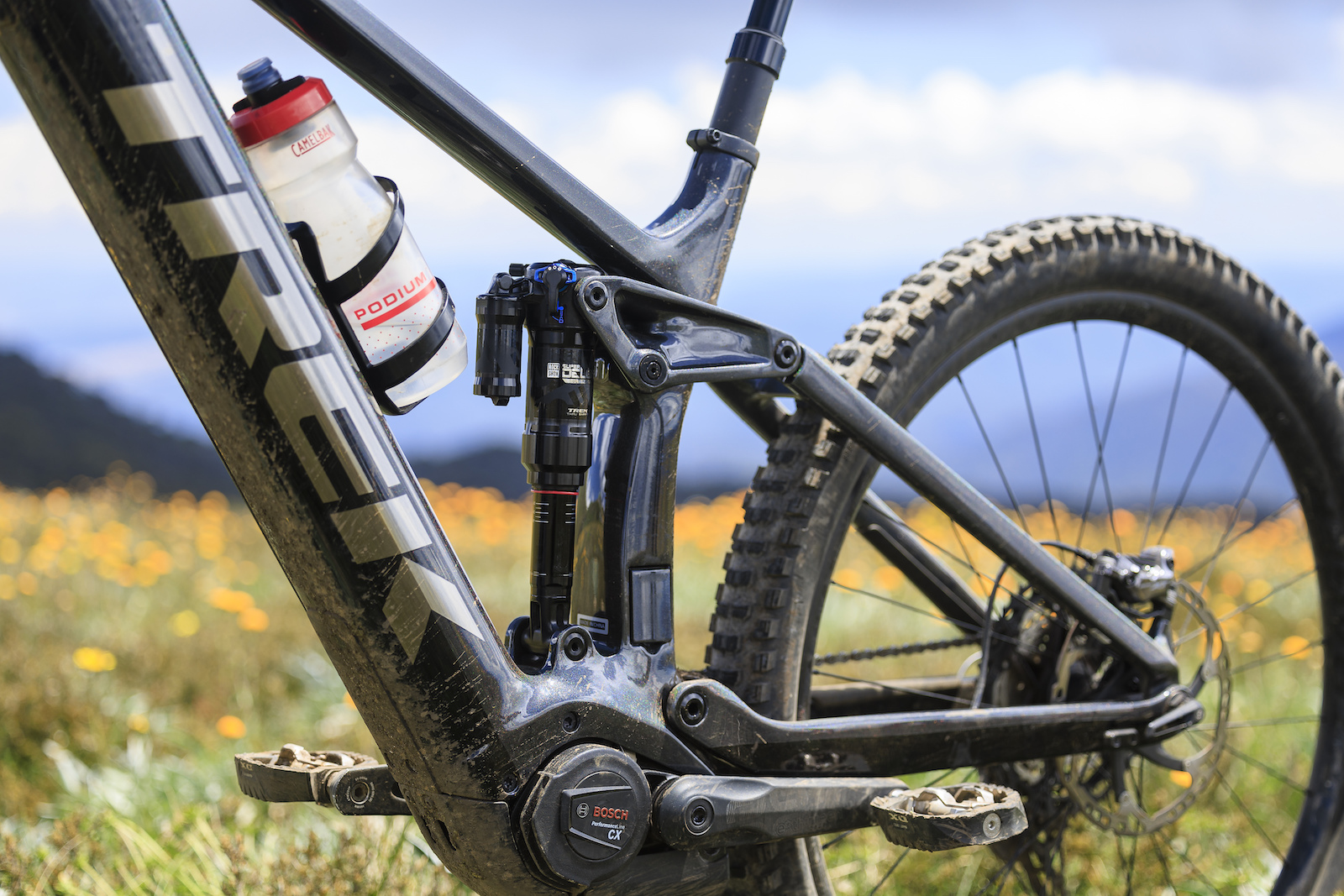
While it will happily cruise along, the Rail also enjoys climbing fast and aggressively. Despite not having enormous chainstays, it’s still very calm and composed on steeper gradients. There’s little wander from the front wheel, with the long wheelbase and active suspension keeping the whole bike glued to the ground.
We didn’t encounter an excessive number of pedal strikes, though switching the shock’s compression dial into the firmer position does lift the ride height noticeably. Furthermore, flipping the Mino Link into the High position will garner you an additional 5mm of pedal clearance, while sharpening the seat angle and shifting more weight onto the front wheel. This will be useful for more active riders, and those who are scaling chunky climbs and eroded gullies.
The only real limiting factor on the climbs is the rear tyre, which didn’t have as much bite as we wanted. The tread profile is a little too shallow, and it lacked grip when the conditions were wet. We’d consider fitting an SE6 on the rear, which would offer more predictable traction on loose and slippery terrain.
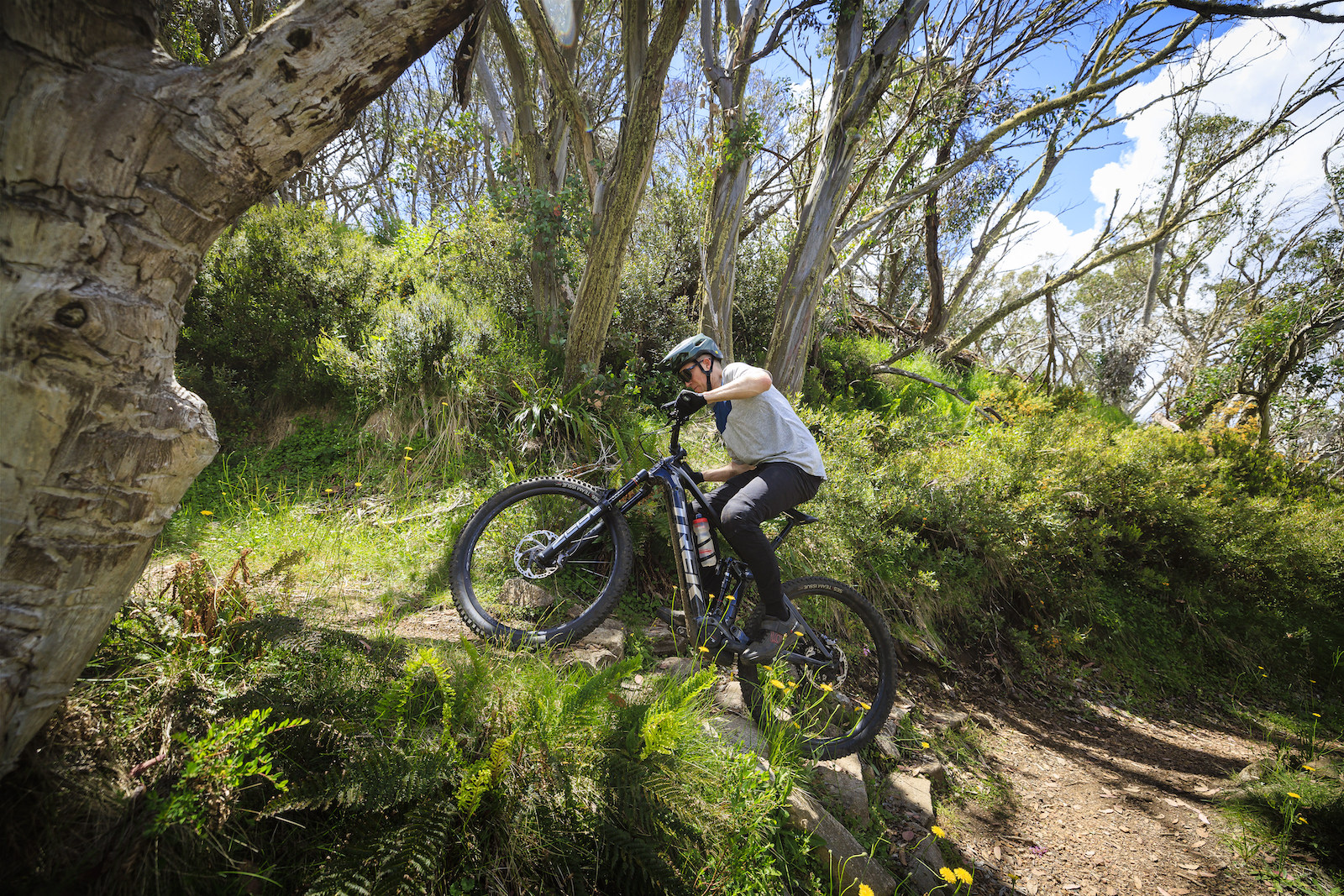
What don’t we like?
As with the previous Trek Rail 9 we tested, we encountered a few annoying issues with our Rail 9.8 XT.
Most disconcerting was the battery rattling around in the frame. After a dozen or so rides we noticed a heavy clunking sensation on the descents that felt a bit like a poorly-adjusted headset. This turned out to be from the upper battery mount, which had come loose from where it bolts into the downtube. While the battery was still able to provide power to the motor, it meant the whole assembly was rattling around inside the frame. Not ideal.
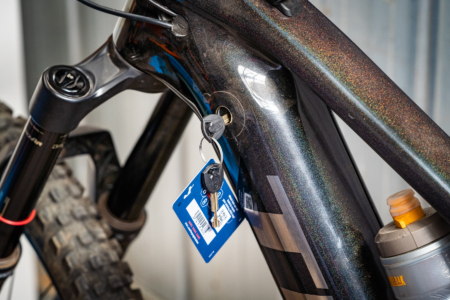
This is of course a disappointing experience to have on a bike costing over $12K.

Our local Trek dealer put in a warranty claim, and within a couple of days we received a solution. This comprised of a small metal bracket that sits on the outside of the downtube, with two bolts passing through it to secure the internal battery mount to the frame. The bracket did the job, and has eliminated the clunking sensation on the descents.
This is of course a disappointing experience to have on a bike costing over $12K. Having to spoken to other Trek dealers, it appears that we’re not the only ones to have encountered this issue, which leaves us wondering why bikes are being sold without the bracket in the first place.
Even after the fix, the Rail hasn’t been totally quiet. The Bosch motor exhibits the usual clacking noise on the descents, though we found it pretty easy to ignore after the first few rides. One of the Mino Link bolts and the main pivot came loose partway through testing, which required some fresh Loctite and a torque wrench to keep them snug. The rear thru-axle has also come loose on two occasions, so we’d recommend checking it regularly to make sure it remains nice and tight.
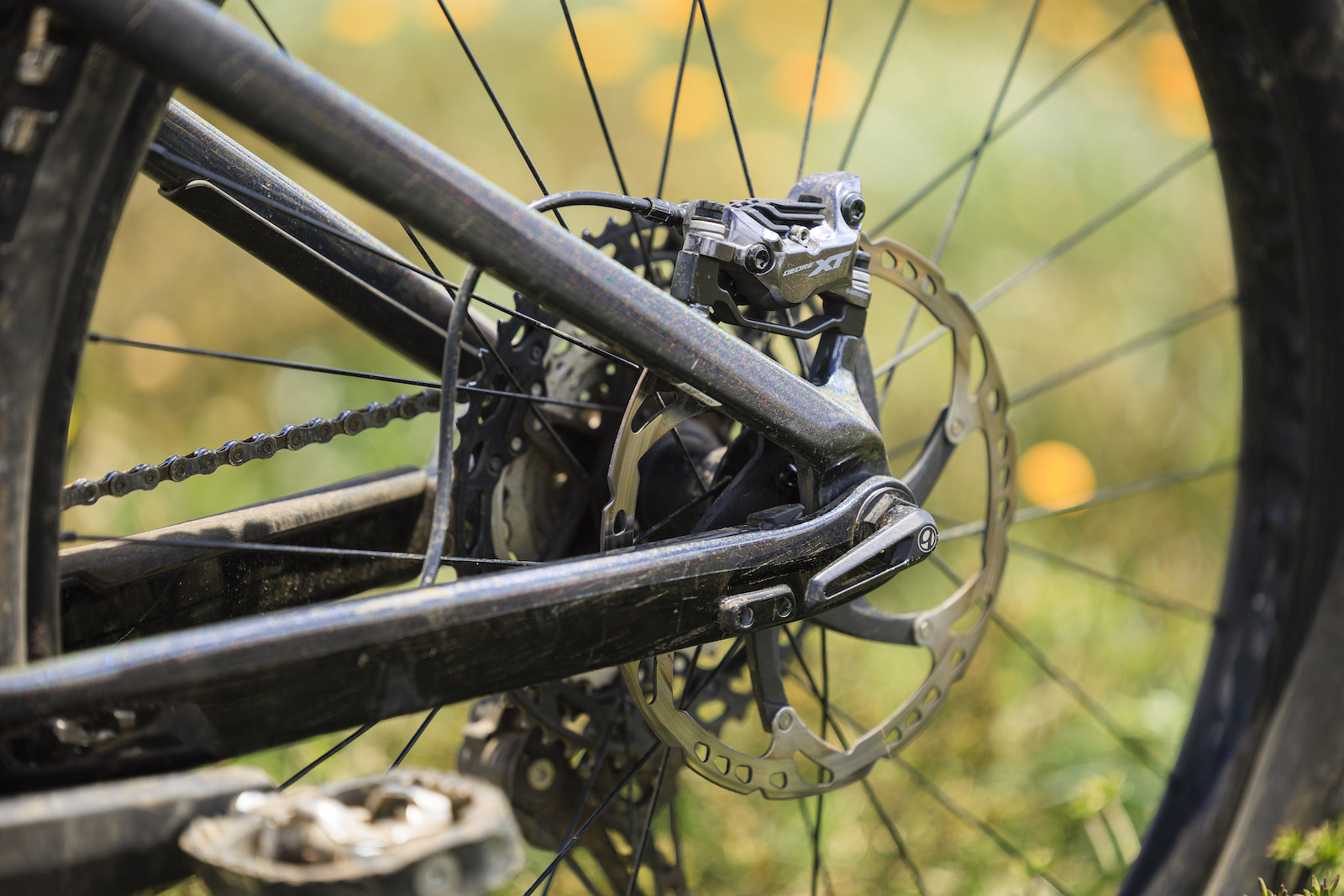
It can be a bit of a tank
While the Trek Rail is a mostly well-balanced bike, it has to be said that riding across flatter and more mellow terrain is not its raison d’etre. Its long wheelbase and overall heft can make it a handful on tight and flat turns, which require some muscling to negotiate.
The short chainstays mean it isn’t a total barge, but compared to the previous version it does require a more forward-biased riding position. This sees it rewarding a more active and assertive rider, especially when you’re threading the front wheel through twistier singletrack.
For smaller folks and those who are newer to the sport however, the Rail can feel like a bit of a tank. If you’re looking for a less brutish riding experience, you might want to consider the lighter and lower-powered Fuel EXe or perhaps even an alloy Rail that features less stretched-out geometry.
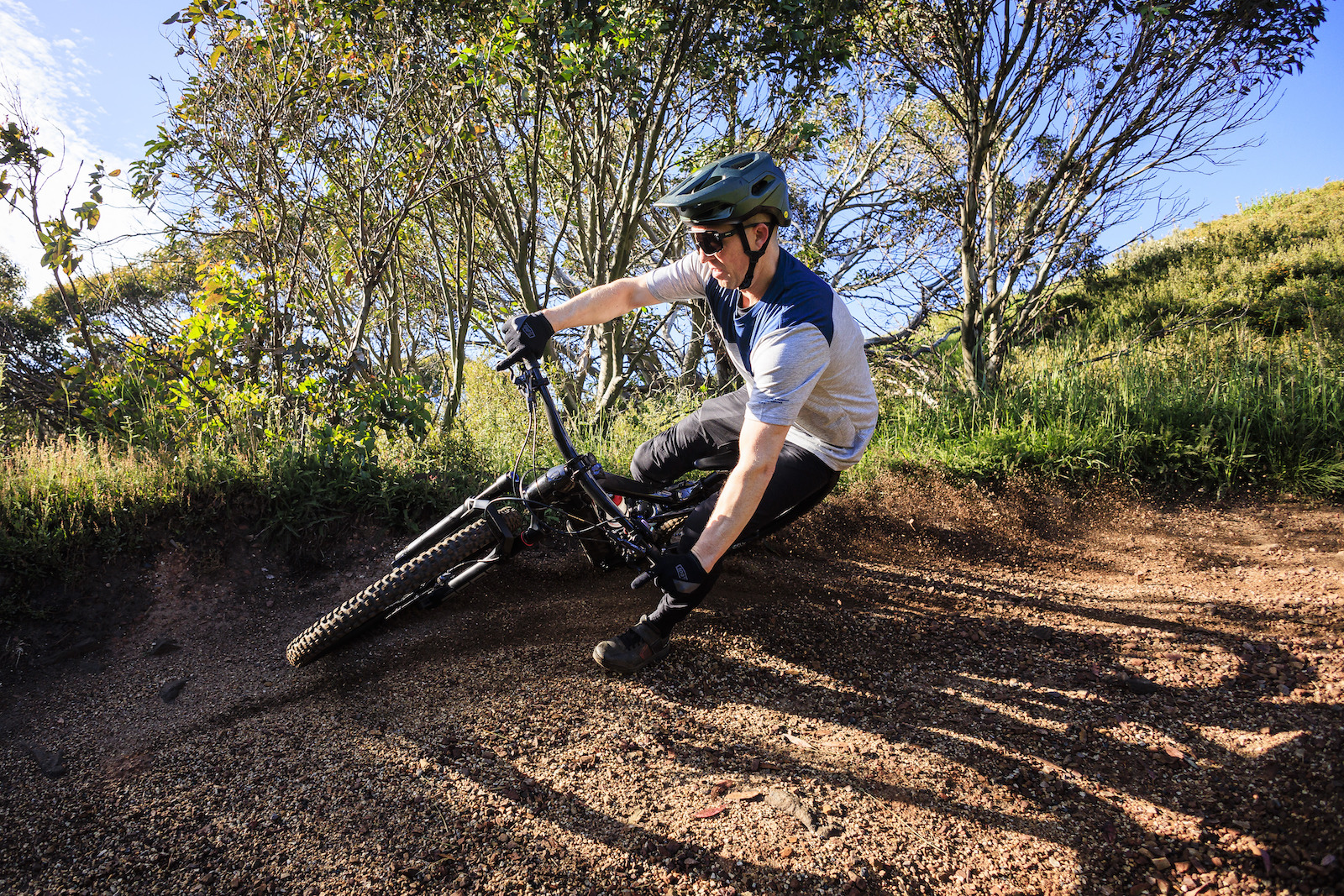
Now while it is a lot of bike to manage, we should point out that for a full-powered e-MTB with dual 29in wheels, the Rail is arguably one of the best-handling bikes in its category. It’s certainly far more fun and involving to ride than the Scott Patron , despite being more capable overall.
It is less agile than the Specialized Levo however, which shares the same amount of travel but packages it into a dedicated mullet platform with a 27.5in rear wheel. Of course it is possible to fit a 27.5in wheel to the back of the Rail, which would be a great option for riders looking for a more playful character and a little extra tyre-to-arse clearance. If you do decide to go down that route, you can take your Rail into a Trek dealer to have the Bosch system reconfigured for the smaller wheel circumference, which will maintain the proper speed reading and motor output.
It’s worth noting that even with the Mino Link in the High position, a mullet setup would result in a lower BB. With that in mind, it may be worth considering fitting a 170mm airshaft to the Zeb, since the Rail’s frame is rated for it. This would lift the ride height and slacken out the head angle further, turning the Rail into a more gravity-focussed machine.

Component highs & lows
When it comes to the price to performance ratio, there’s no doubt that the Trek Rail 9.8 XT hits the sweet spot in the range.
The suspension is top-notch and offers plenty of usable adjustability. The Zeb’s Charger 2.1 RC damper is excellent, and really doesn’t give up a whole lot compared to the pricier Ultimate version. The Thru Shaft shock is brilliant, and it’s a big reason why the Rail is so plush and controlled.
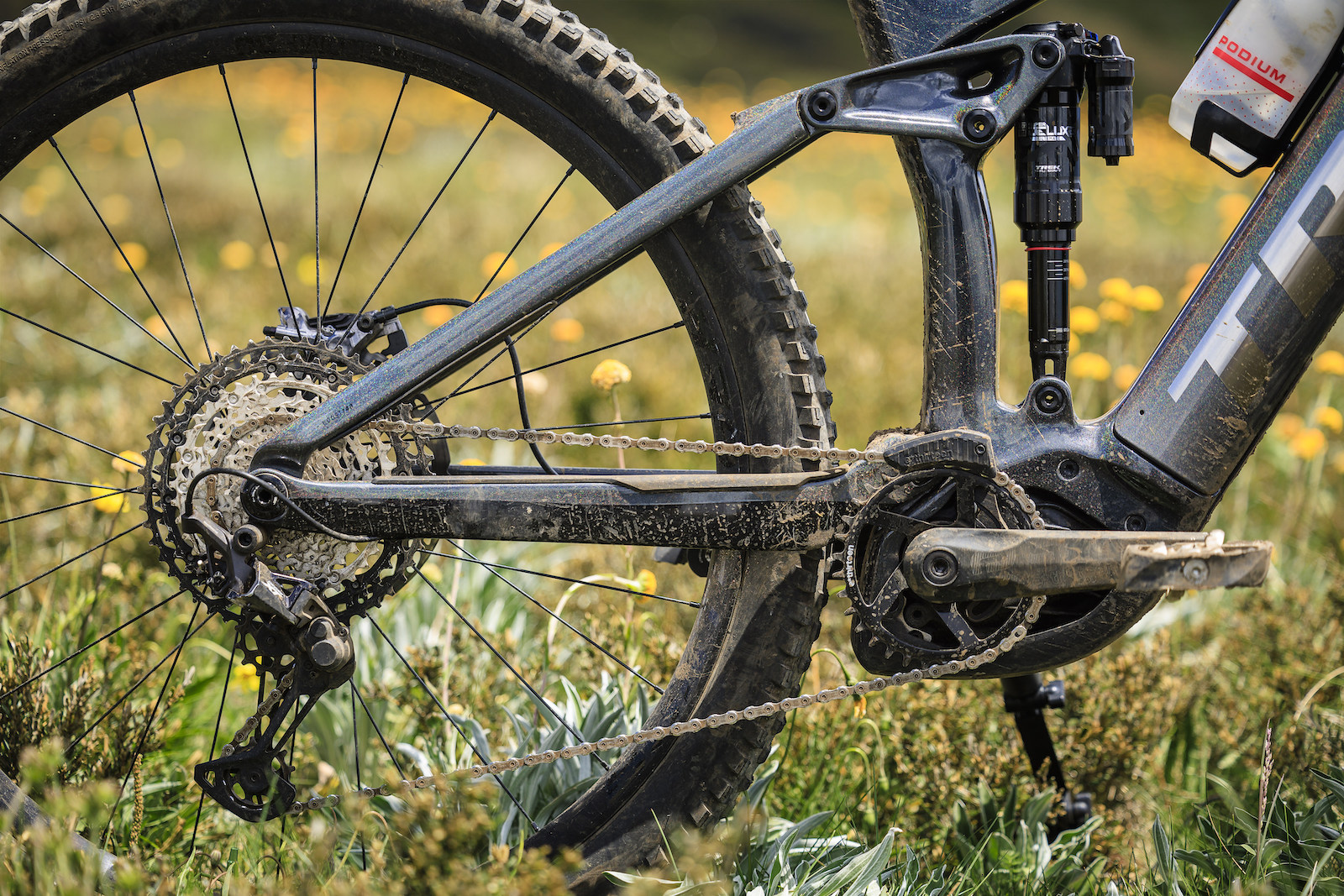
The Shimano XT groupset is solid, and we’re glad to see a genuine Shimano 12-speed chain when other brands have been skimping and fitting a KMC chain instead. Unfortunately a freak encounter with a rock that got jammed in the chainring caused the chain to break while Justin was partway through a Stonefly mission. A spare link rescued the day, though once back in the workshop we had to replace both the chain and chainring. It was a timely reminder that stuff gets absolutely hammered on an e-MTB, and having a fancy XTR or AXS drivetrain might not be the most practical approach.
We did bleed the brakes partway through testing, as the rear was feeling slightly spongey. Thankfully it’s a quick and easy process to do with Shimano brakes, and we didn’t need to touch them for the remainder of the test period. While heavier riders will benefit from fitting a 220mm rotor up front, we found the stock setup to be plenty powerful.
Given the bush-bashing you can do aboard the Rail, we’ve been happy to have alloy crank arms and rims. Bontrager’s Line Comp wheels have been absolutely solid throughout testing, with no loose spokes, rim dings or freehub pops to speak of.
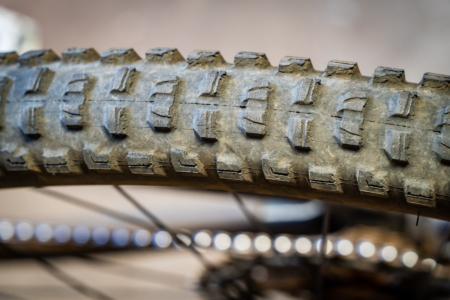
We’ve also managed to come out the other side with zero punctures or sidewall tears, which is quite frankly, amazing. The stock tyres will perform well in most Australian conditions, though if this were our bike, we’d put the SE6 on the rear to increase climbing grip and cornering traction on loose surfaces. We’d then fit a stickier compound tyre up front, like a Maxxis Assegai 3C MaxxGrip, a Specialized Butcher T9 or a Continental Argotal Super Soft DH tyre.
As far as touch points go, the LED controller is functional, but the way it sits up above the bar makes it somewhat vulnerable in the event of a crash. The Kiox 300 display is nicely tucked out of the way though, with a vibrant screen that provides you with access to loads of data without being too distracting for the rider. Still, we’re glad to see Trek update the Rail for 2023 with the newer System Controller and Mini Remote for a more discreet user interface.
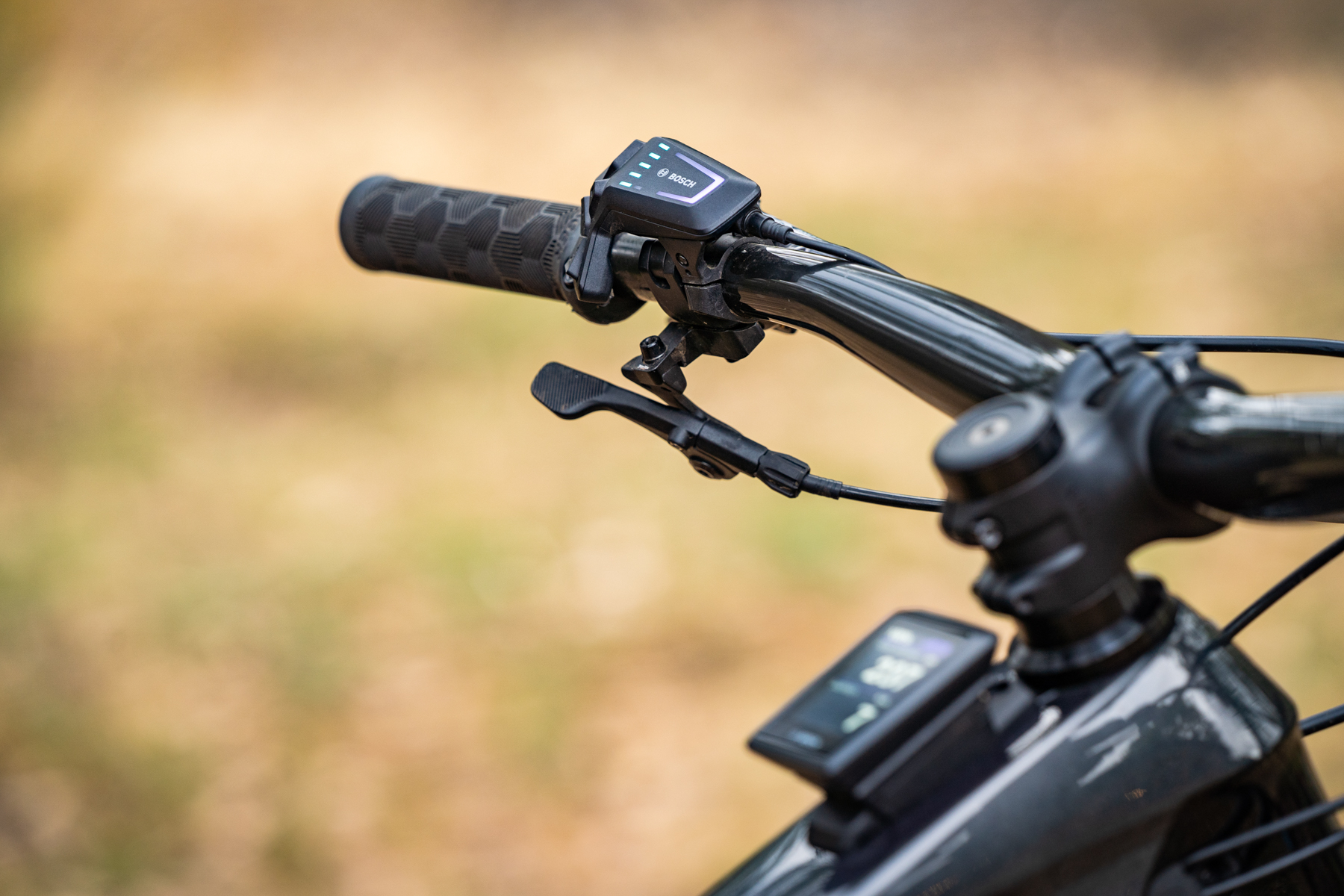
What about the alloy Rail?
If you didn’t quite have the budget to stretch to the Rail 9.8 XT, the alloy Rail 9 is definitely worth consideration. It features the same suspension package, wheels and tyres, and it still gets a Bosch Performance Line CX motor. It’s equipped with a smaller 625Wh battery though, and it uses the slightly older generation frame with a shorter reach and slacker seat angle. That’s not necessarily a bad thing, as we found it to be a slightly more agile bike due to the shorter wheelbase, which will potentially be preferable for less experienced riders.

Trek Rail vs Norco Sight VLT
Speaking of comparisons, a bike that we’ve spent a load of time on is the Norco Sight VLT , which is another thoroughly popular e-MTB in Australia.
Like the Rail, the Sight VLT features 160/150mm of travel and is built around 29in wheels. It’s also available with an alloy or carbon frame, though Norco has equipped it with a Shimano EP8 motor and a custom battery that’s available in 500, 720 and 900Wh sizes.

The spec you get for the money is notably better with the Sight VLT. With a 720Wh battery, the top-end Norco Sight VLT C1 sells for $12,899 AUD. That’s a similar price to the Rail 9.8 XT, but the Norco’s spec is significantly more desirable with Fox Factory Series suspension, SRAM Code RSC brakes, a OneUp dropper, DT Swiss wheelset and Maxxis DoubleDown tyres as standard with a 3C MaxxGrip Assegai on the front.
Spec aside, these two bikes do produce quite a different ride experience on the trail.
The Sight VLT feels like a bigger, heavier and less refined e-MTB. This sensation was accentuated on the bike we tested, which came fitted with a 900Wh battery that weighs half a kilo more than the Rail’s 750Wh battery. However, it’s really the Sight VLT’s longer rear centre (462mm vs 448mm) that makes the biggest difference in terms of handling.
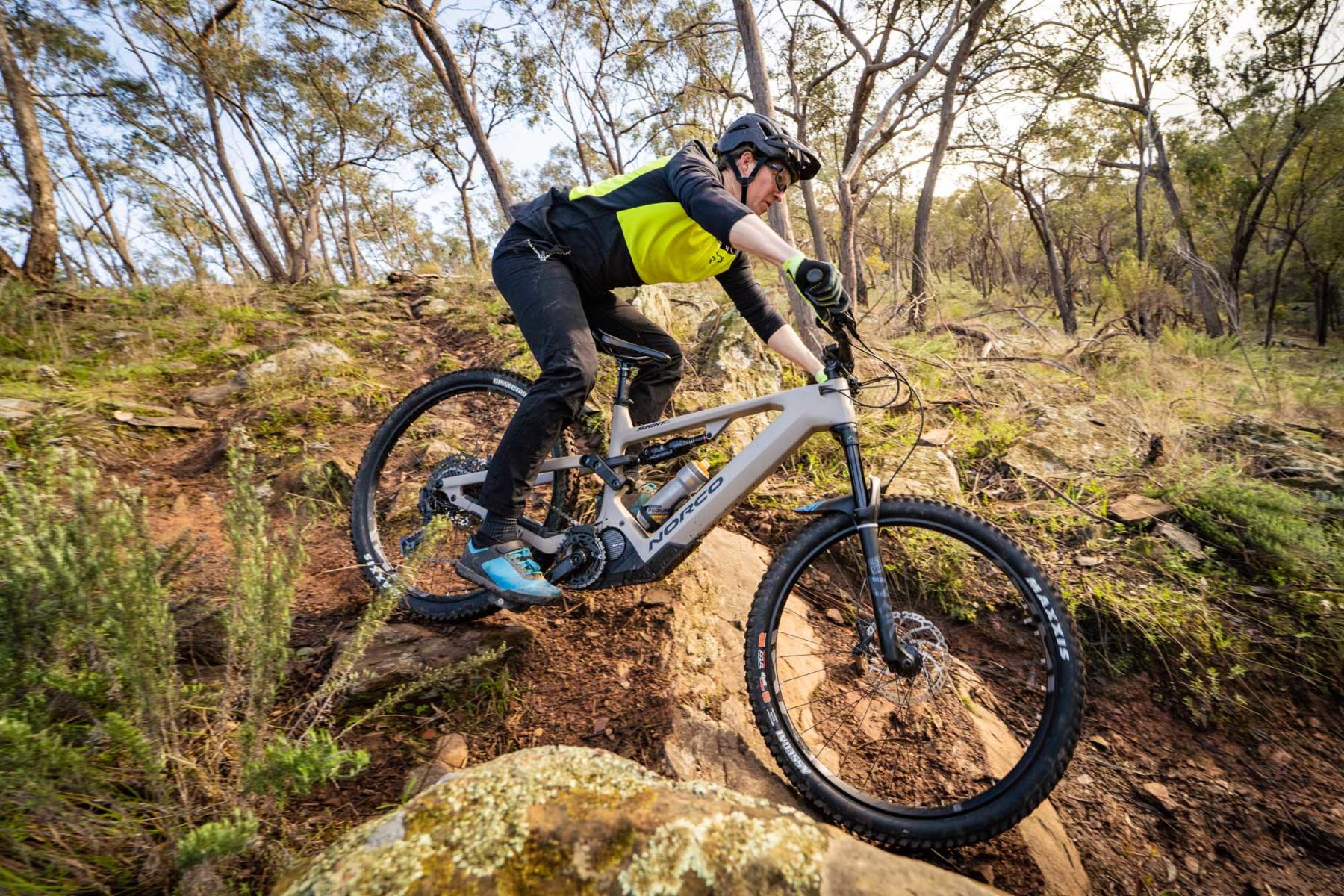
The longer wheelbase does make the Sight VLT incredibly stable, and we found it would happily plough its way downhill with a plush and bottomless feel to its rear suspension. However, it’s not as responsive as the Rail. It’s noticeably harder to change direction, with a cumbersome feel through the corners and across tighter trails. It’s also much more difficult to lift up the front wheel when launching off a drop or manualling down the trail.
The long chainstays and steep seat tube angle makes the Sight VLT a very planted bike on the climbs. Unfortunately the Shimano EP8 motor doesn’t produce the same power or overrun as the Rail’s excellent Bosch motor, resulting in slower climbing speeds and less assistance on technical stop-start features. The Rail pulls further ahead on tight switchback climbs, with its shorter chainstays allowing it to pivot around with more precision.
While both bikes are great examples of a modern full-powered e-MTB, the Rail edges out the Sight VLT when it comes to suspension performance and all-round handling. Whether it’s worth the price premium depends on how much value you place on its ride quality, Bosch system and Trek’s warranty support.
Trek Rail vs Trek Fuel EXe
Of course the competition for the Trek Rail isn’t just coming from other brands. With the recent introduction of the Fuel EXe , Trek now has an alternative choice in its e-MTB lineup.
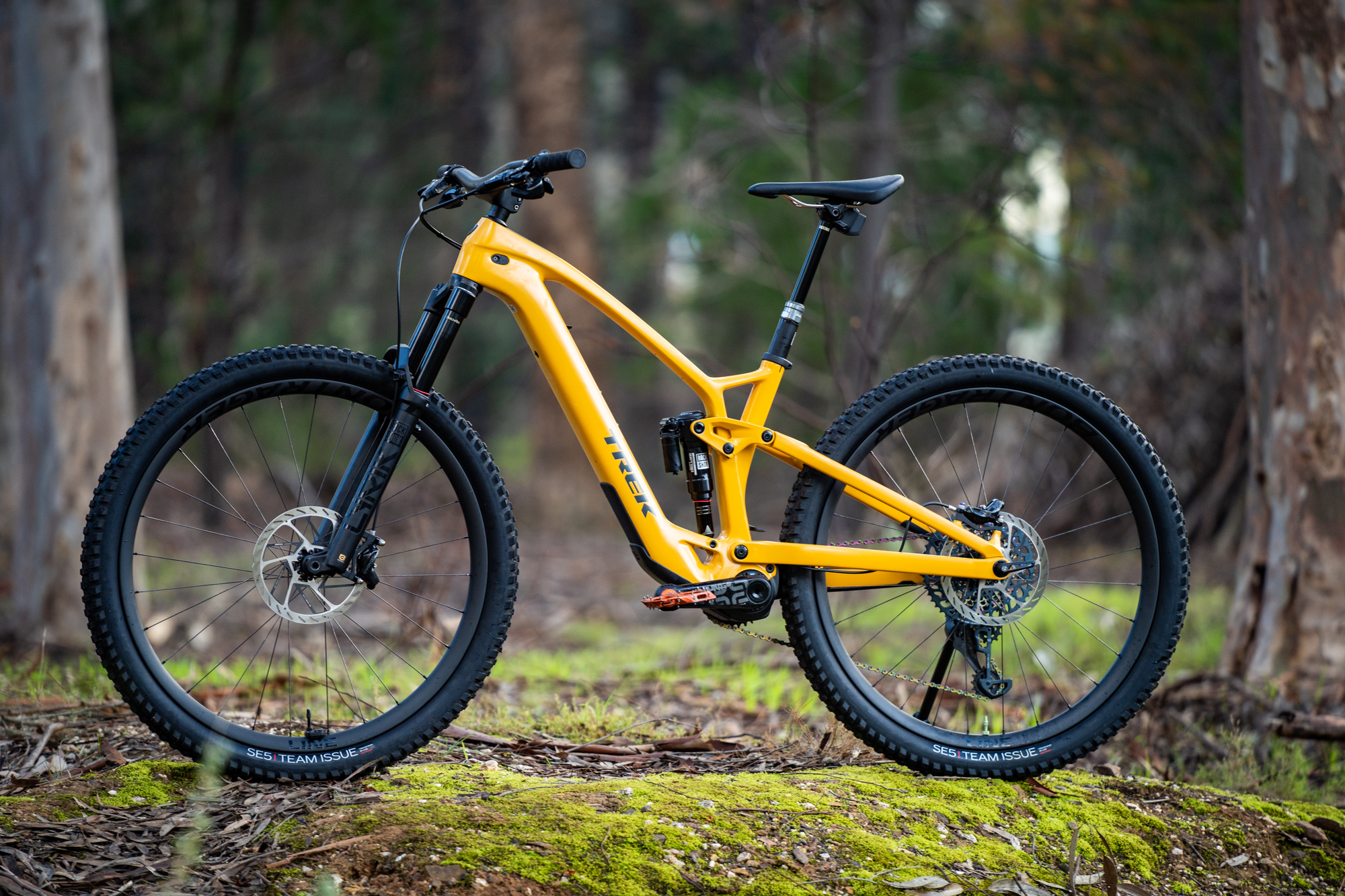
Compared to the Rail with its 85Nm motor and 750Wh battery, the Fuel EXe takes a sleeker and lighter-weight approach. It’s built around a tiny TQ motor that puts out 50Nm of peak torque, and it uses a much smaller 360Wh battery. Along with its slimmer frame construction, it weighs in at just 18kg for the complete bike.
The Fuel EXe does have less travel with a 150mm fork and 140mm at the rear. However, the frame will accommodate a 160mm travel fork, which is exactly how we set it up for our long-term Fuel EXe review . Along with stickier tyres and a few other changes, the Fuel EXe is an incredibly capable and fun e-MTB to ride.
Comparing the two bikes, it’s obvious that the Fuel EXe’s suspension isn’t as plush as it is on the Rail. The extra 10mm of travel and the custom Thru Shaft shock gives the Rail hypersensitive performance that delivers more grip and more comfort when things get choppy. Along with the slacker geometry and added weight, it’s a more planted bike at speed, especially when full-gassing it on hectic DH trails.
When things get tight and twisty however, the lighter Fuel EXe offers greater agility. It’s easier to ride, with more intuitive and involving handling that doesn’t make you feel like you’re an unwilling passenger. The lower weight is instantly noticeable on the trail, allowing you to change direction with less effort. It’s just also easier to deal with on a practical day-to-day basis, like when you need to flip it over to repair a puncture or load it onto a bike rack on the car. Combined with its softer and whisper-quiet motor output, it’s a less intimidating bike for newer riders.
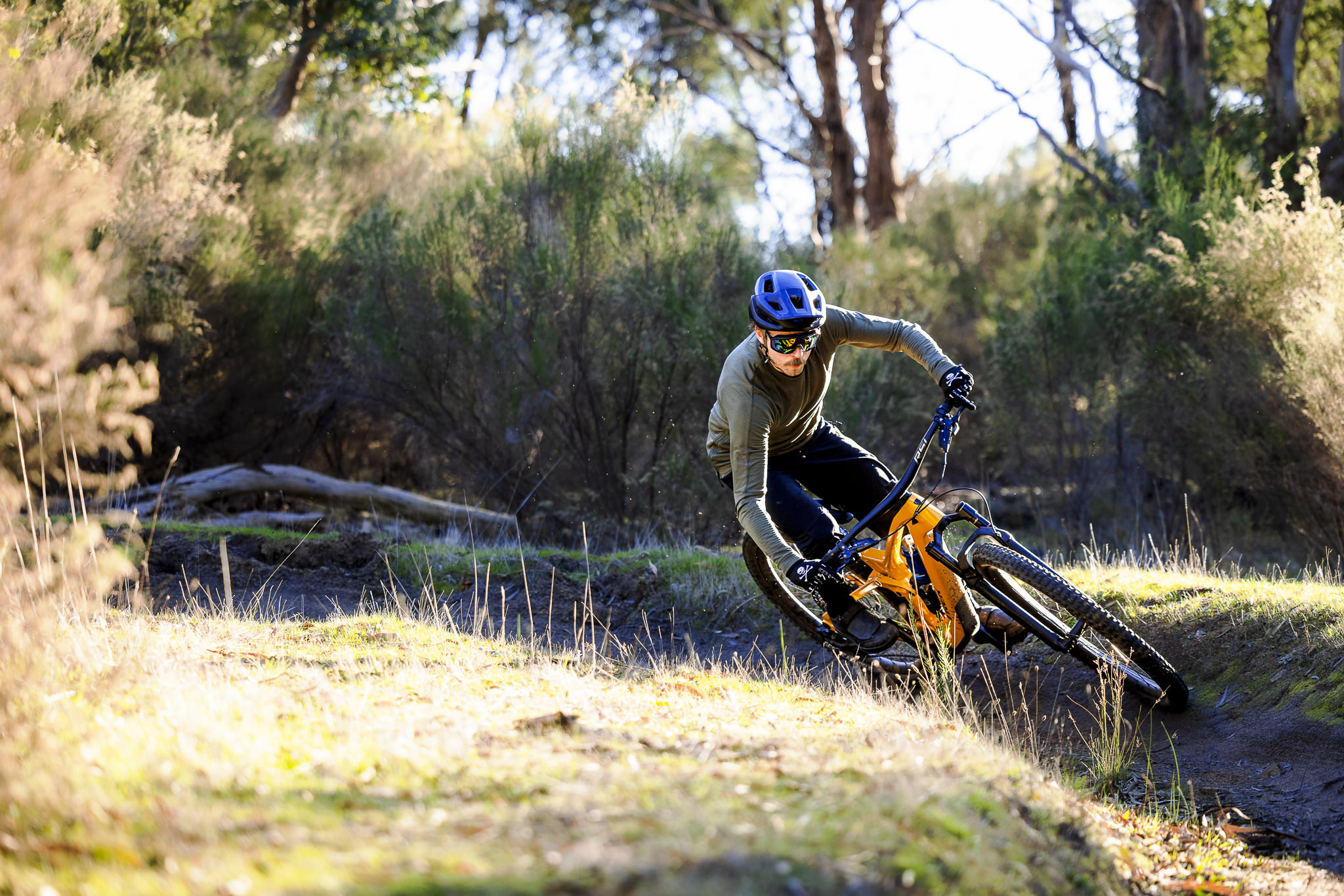
The Fuel EXe is no doubt the better option if you’re riding in a group with regular mountain bikes. It’s quiet and stealthy, so it’s less out of place. And with the motor set to the lower assist modes, you’ll be riding at similar speeds to everyone else.
If everyone in your riding group has a full-powered e-MTB however, you’ll be putting in considerably more effort with the Fuel EXe. You’ll need to make use of the highest assist setting, which tends to drain the 360Wh battery quite quickly.
Speaking of, we actually had both the Fuel EXe and the Rail during a big backcountry ride around Mt Buller. On the final climb back to the village, the Fuel EXe’s battery ran flat, while the Rail finished with 50% left in the tank. Put simply, the Rail offers you more capacity for long rides with plenty of elevation gain. That makes it the better option if epic rides in the mountains are on the agenda, particularly if you’re going to be riding with other e-MTBs.
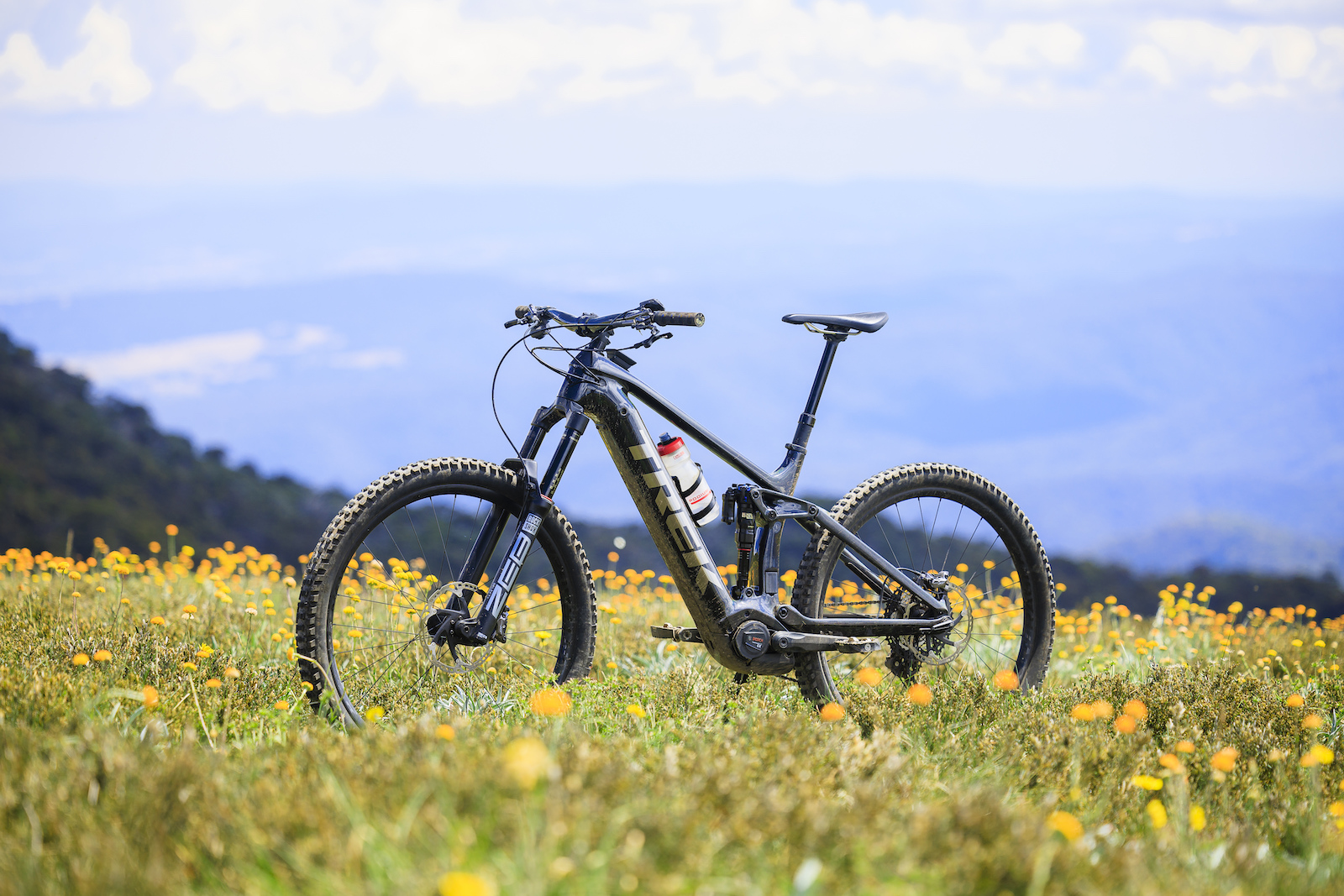
Flow’s Verdict
The latest generation Trek Rail continues to be one of the best handling full-powered e-MTBs we’ve tested.
The cornerstone is its terrific suspension performance, which offers excellent small-bump sensitivity and grip with a responsive feel all the way throughout the travel. Indeed the way it manages to balance big-hit compliance while still giving good pop is mighty impressive. Along with its stout chassis, long wheelbase and burly build kit, the Rail is capable of monster trucking its way down some pretty gnarly descents.
It isn’t a total barge on flowier singletrack however, which is largely down to its taut carbon frame, responsive suspension and short chainstays. Certainly for a 24kg e-MTB, it’s one of the more intuitive and fun bikes to ride.
It’s a mighty fine technical climber too. The powerful Bosch motor is responsive and intuitive, while the 750Wh battery offers loads of range for proper all-day rides in the mountains.
We reckon it would benefit a steeper seat angle, and given how many frame sizes Trek offers in its regular mountain bike range, it’d be great to see the Rail produced in a similar range of sizes. And while the majority of the build kit on the Rail 9.8 XT proven to be solid, we were disappointed to encounter a glaring problem with the battery on our test bike. This is an expensive bike after all, so we have high expectations.
Once that issue was sorted, the Rail has proven to be a solid performer that we’ve thoroughly enjoyed on some epic rides over the summer season.
We wouldn’t necessarily recommend it for smaller riders or those who are newer to mountain biking, as its overall heft and raked-out wheelbase can make it a handful on more mellow terrain. Those riders will likely be better served by the lighter Fuel EXe, or perhaps even an alloy Rail with its slightly more moderate geometry.
But if you’re after a powerful and highly capable e-MTB that thrives on enduro-type trails, the Rail delivers control and composure in spades, especially when things get steep, fast and chunky.
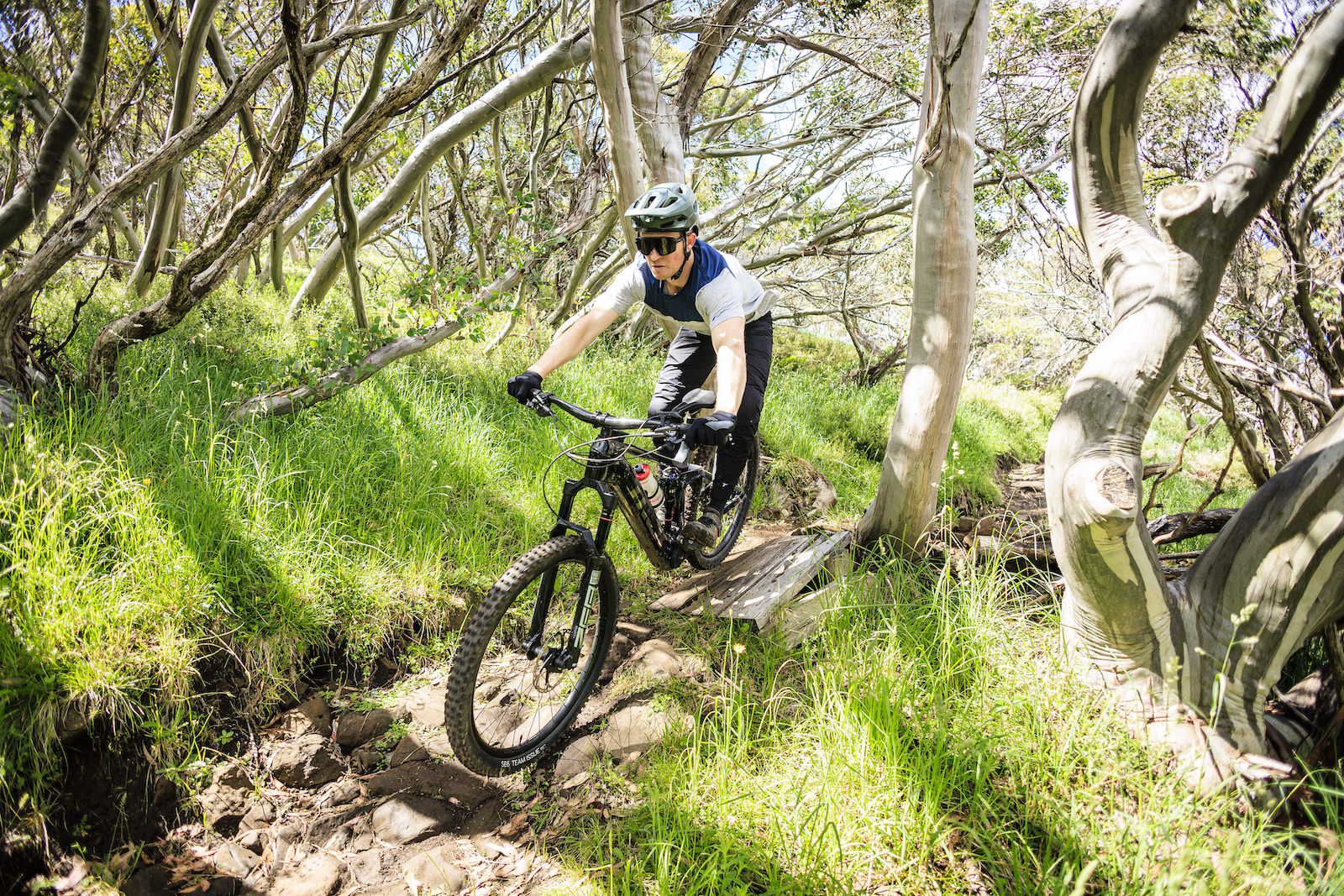
- Submit for Review
- Terms & Conditions
Enjoy reading this?
Get similar articles delivered directly to your inbox
- Register New User
- First Looks
- Friday Fails
- Community Blogs
- Fantasy League DH
- Places Directory
Field Test Review: 2022 Trek Top Fuel - Same Name, Different Bike
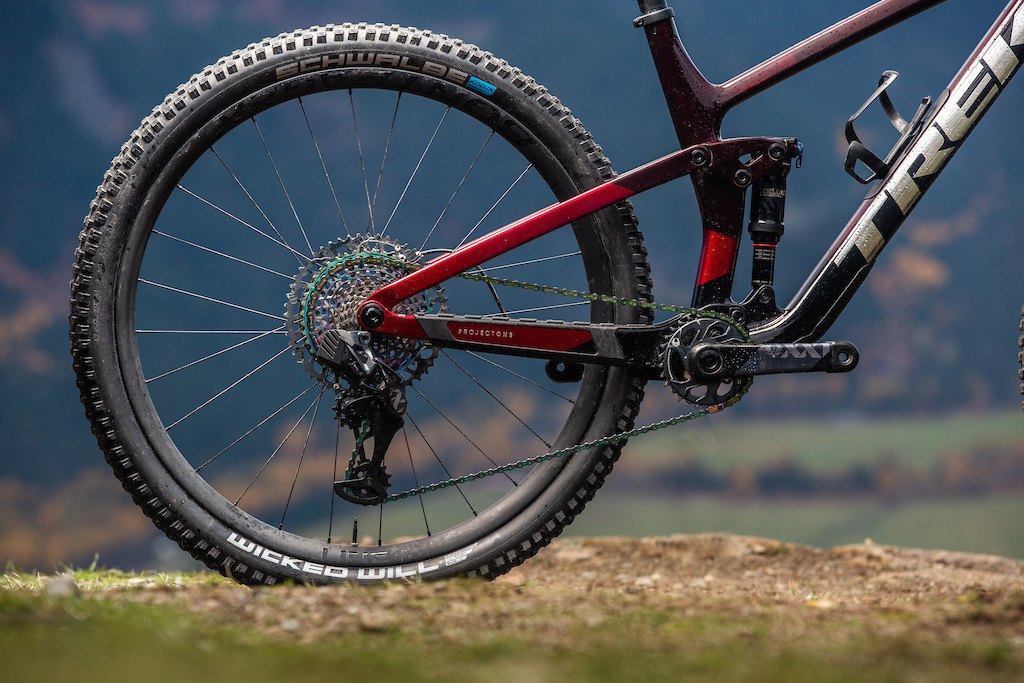
Cool Features
Gear-obsessed editors choose every product we review. We may earn commission if you buy from a link. How we test gear.

Trek’s Carback Bicycle Radar Light Takes on the Market Leader
The Carback claims a better detection range than the Varia RTL515, but its real-world performance doesn't quite match up.
Takeaway: The Trek Carback is a serious contender to Garmin in the on-bike radar market. However, while the Carback nears the Varia RTL515’s performance, Trek’s claim of increased radar detection range fell short in our side-by-side testing.

Trek CarBack Radar Rear Bike Light

The Garmin Varia is so widely used and functions so well that Garmin essentially cornered the on-the-bike radar market. Competing units from Bryton and Magicshine are available, but they suffer from inconsistent car detection or poor battery life, so it’s hard to recommend anything other than the Varia.

I trust the Varia so much that I purchased a second one for my cargo bike right before having my first kid. While I know the radar cannot protect me from being run over by someone staring at their cell phone, it will at least alert me that a car is approaching me from behind.
If you were to force me to bet which brand would attempt to make a run at Garmin in the radar game, I’m not sure I would have picked Trek. But with its new Carback system, Trek comes closest to unseating Garmin from the taillight radar throne.
Overall, Trek’s Carback is a good product. The device offers solid detection, plus a few other very nice features that are upgrades over the Varia. Unfortunately for Trek, I don’t think the Carback beats out the Varia as the best product in the category, but it gives the category leader a run for its money.
Carback Details
Trek put a lot of thought into designing the Carback. Trek boosted the Carback's detection range from 460 feet claimed by the Varia to 790 feet (claimed by Trek) for the Carback. The brand switched from a 24Ghz radar to 77Ghz to accomplish this.
To support the more powerful radar, Trek installed a new 2,000 mAh battery, which provides the light a claimed 7-hour run time. However, in testing, I found the light’s run time closer to 8 to 9 hours, depending on the light mode used. The Carback has a very convenient LED light battery life gauge on the side of the device, something the Varia lacks. (Both lights also give you a low battery warning on your paired cycling computer.) The Carback charges with a USB-C plug, another nice upgrade from the Varia’s Micro-USB. The Carback and the Varia carry an IPX7 waterproof rating, and the lights are ANT+ and Bluetooth capable.

For mounting, the Trek Carback uses the same mount as Trek’s popular Flare RT series of lights. Basically, it is a rubber strap with Trek’s proprietary Blendr accessory mount attached. The best method to attach the Carback is directly to the saddle. If you ride with a Trek or Bontrager saddle, you can attach a Blendr mount directly to the shell with an adapter (sold separately).
A few places sell 3D-printed mounts and GoPro-style adapters to attach a Blendr accessory to various saddles and seatposts from other brands. If you want to move the Carback between different bikes, the rubber strap works fine., but I will eventually get annoyed with it, as I do with every other strap of this kind, and buy the right adapters for my bikes.
Side-by-Side Comparison to the Varia RTL515
I tested the Carback a few different ways. First, I rode with both the Carback and a Garmin Varia on my bike, each paired to a different cycling computer. I also rode quite a bit with a colleague, with one of us using the Carback and the other using the Varia. Finally, I did some back-to-back rides where I switched which radar system I used.

The good news is that the Carback is nearly as good as the Varia. And I recommend it to riders who already own the Flare RT lights and matching Blendr accessory mounts. It’s a no-brainer upgrade for these folks.
But there are two things that bug me about the Carback. First, Trek claims over a 71% improvement in detection range versus the Varia (790 feet vs 460). However, in real-world testing, this was not the case. In every scenario, either riding with both radar systems or riding side by side with a colleague, there was never any discernible difference between which system detected a car first. And in several instances, the Varia warned me of a car a second or two before the Carback.
Had Trek not claimed the greater detection, the Carback’s range would be at the same level as the Varia (which is great). But since the Carback only works on par with the Varia and not better (as claimed), I feel that Trek’s claims are somewhat misleading.

Second, the Carback lacks the variable light pattern of the Varia. When the Garmin detects a car, the Varia’s light pattern changes from steady red to flashing. Knowing that the Varia has another method to grab a driver's attention—short of slapping the cell phone out of their hand—that a cyclist is on the road is extra peace of mind for me. It’s a small detail, but it makes me always reach for the varia over the Carback.
I wanted to hear from Trek on both points and Alex Applegate, Trek's Electronics Marketing Manager, was kind enough to respond. “It was an intentional decision not to move away from our best and most visible flash pattern as cars were detected and approaching,” Applegate said regarding the lack of light pattern change. He also left open the possibility that this functionality might be added to the Carback.
Applegate also addressed the detection range question, “It is important to note that Radar requires line of sight, and in many cases, especially in city and suburban areas, the environment is the limiting factor.”
He continued, “Factors such as the crown of the road, curves in the road, and the angle of the rider and mount can all affect the line of sight and detection range. It is more common than you’d think for environmental factors to affect the range.” So, while I did not see an increased detection range in my extensive testing of the Carback, Trek is confident and fully stands behind its claim.
Final Thoughts
Trek produced a light and radar that functions almost equally to the Varia. And the Carback certainly is better than the other on-bike radar alternatives to Garmin. The Carback is slightly heavier than the Varia (86 grams vs. 72 grams). While it has less battery life, Trek’s nine-hour run time (compared to the Varia’s 16 hours) should be plenty for most riders. However, not needing to charge the device as often is convenient if you ride a lot.
Where the Carback improves on the Varia is with USB-C charging, which is almost a requirement for electronic accessories, especially at this price. Trek’s unit also has very easy-to-read battery life indicators. They are much more convenient than the Varia’s tiny little blinking LED, which is sometimes hard to see.
In the end, I can recommend both lights. If you already own Blendr accessories, going with the Carback is an easy choice. But because of the slimmer form factor or longer run time, the Varia still comes out a bit ahead. Plus, Garmin has the Varia RTL515 on sale right now for $50 less than the Carback, which makes it a no-brainer for anyone who doesn't already own a radar light. It’s nice when some competition can benefit the consumer.
Test Editor Dan Chabanov got his start in cycling as a New York City bike messenger but quickly found his way into road and cyclocross racing, competing in professional cyclocross races from 2009 to 2019 and winning a Master’s National Championship title in 2018. Prior to joining Bicycling in 2021, Dan worked as part of the race organization for the Red Hook Crit, as a coach with EnduranceWERX, as well as a freelance writer and photographer.

.css-1t6om3g:before{width:1.75rem;height:1.75rem;margin:0 0.625rem -0.125rem 0;content:'';display:inline-block;-webkit-background-size:1.25rem;background-size:1.25rem;background-color:#F8D811;color:#000;background-repeat:no-repeat;-webkit-background-position:center;background-position:center;}.loaded .css-1t6om3g:before{background-image:url(/_assets/design-tokens/bicycling/static/images/chevron-design-element.c42d609.svg);} Member Exclusive

4 Ways to Increase Your VO2 Max

10 Mountain Biking Tips to Perfect Your Riding

This Cyclist Has Built Her Life Around Bikes

8 SI Joint Exercises to Help You Avoid Aches

All About Critical Power

Cycling May Reduce Knee Pain, Study Says

Easton EC90 ALX: A Great High-Performance Wheelset

The Benefits of Deadlifts

This Core Workout Only Takes 18 Minutes

The True Health Benefits of Drinking Lemon Water

How to Diagnose and Fix These Common Bike Noises
Trek Checkpoint ALR 5 review – a confident, capable gravel bike
Trek's updated aluminum checkpoint is a surefooted, confidence-inspiring ride that's perfect for ruined back lanes, byways and well-laden travels.
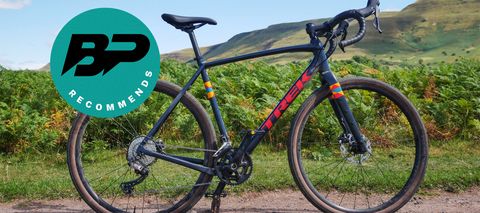
BikePerfect Verdict
The reshaped Checkpoint frame neatly combines confidence-inspiring stability with a fun, engaging feel which goes well at all speeds on all sorts of surfaces. This might not be the lightest or fanciest build, but the key bits are great and the rest just quietly works.
Stable and predictable
Comfortable
Great shifting and brakes
Gearing a bit tall for the weight
Could use a dropper post
Why trust BikePerfect Our cycling experts have decades of testing experience. We'll always share our unbiased opinions on bikes and gear. Find out more about how we test.
The aluminium-framed ALR models sit at the bottom of Trek's Checkpoint range, with the lighter carbon SL and race-focused SLR bikes above, but in truth that's not a bad place to be. The ALR 5 gets a full set of excellent Shimano GRX components for the drivetrain and brakes, decent tires on tubeless-ready rims and lots of rack and fender mounts.
The result is a surefooted, confident bike that's ready for exactly what Trek says it's for – gravel riding for fun, commuting or just general adventures. Which is pretty much what most people are after when looking for the best gravel bikes or best cheap gravel bikes .
Design and geometry
For 2023, the Checkpoint frame has seen some changes – basically it's got longer both in the front centre and the chainstays, and the stem is shorter to compensate. I tested a 58cm, and compared to the 2021 model it has 10mm longer chainstays, 20mm more reach and is 26mm longer overall. The 90mm stem and 60.9cm/41.1cm stack and reach figures keep the overall riding position fairly relaxed, with a usefully tall front end and slightly head-down, but certainly not front heavy, bias.
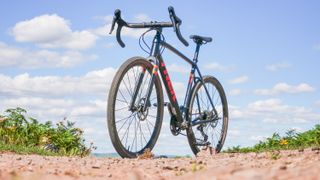
The head angle is the same as before at 72.3 degrees, presumably to keep the steering decently snappy, as is the bottom bracket drop at 7.4cm.
This might be the 'poor man's' model with its humble alloy frame, but that doesn't mean it's unsophisticated. The various touring-friendly mounts are complimented by internally-routed cables that help a lot when strapping on frame bags or cages, as well as keeping them generally out of harm's way. I did find several of the bungs protecting the mounting/cable holes disappeared overboard on rough trails though, so if you want to keep filth out of your threads/frame you might want to stock up – or wind in some actual bolts where you can.

Components and build
Trek has spent the budget wisely here, speccing the excellent Shimano GRX shifters, levers and hydraulic brakes. The flat-fronted levers are particularly good for grip when it's rough, the shifts are always positive and the two-piston calipers are powerful and easy to modulate on the 160mm discs. Basically, the whole stop and go thing is covered perfectly.

Well, almost perfectly. The 2x11 drivetrain gives a very useable spread of ratios, but for the most serious off-road climbing it's a little high. At the top end it's good for 35mph before you spin out, which is great for the road and fireroad descents, but leaves the lowest gear (30/34t) slightly high for the steepest, techiest climbs. That's especially true if the bike's loaded up.

That's the lowest combination of ratios that will fit, though, so your options there are either to keep the bike as light as possible, fit a 1x crank and lose a fair bit of top speed, or get stronger...
The finishing kit is all in-house Bontrager stuff, and while it's all perfectly good they're pretty easy targets for weight loss upgrades. The Bontrager Elite Gravel bar is 44cm wide on this frame size with a good flare to the drops for extra leverage, and the comfy GRX hoods tilt inwards just enough to encourage a slightly elbows-out stance that's good for control.

The wheels – Switch hubs, 21mm wide Paradigm rims (the SL version on one end, presumably the front) and 24 spokes on each – are similarly utilitarian, being strong, middling for weight and entirely decent for the job. Wearing Aeolus XXX rim strips they're tubeless ready, and so are the Bontrager GR1 Team Issue tires, which is nice – in fact, Trek lists 6oz of its TLR sealant as a 'tire part,' so presumably consumer bikes are supplied already set, just as our test bike was.
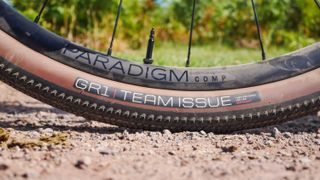
The tires are predictable and confidence inspiring on the unusually dry terrain of our test period, as well as on tarmac both damp or dry, but are clearly not designed for mud. There's room in the frame for up to 45mm rubber should you want to go wider.
Oh, and while the front axle looks like you'll need to carry a hex key to get it out, the lever on the rear thru-axle actually pulls out to fit in either one.
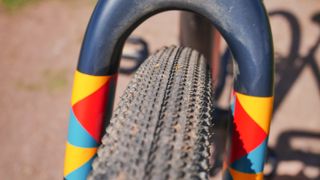
Performance
The Checkpoint has a confident feel – its length and reasonable heft keep it planted, while the steering is stable without being sluggish. It's the same whether you're on gravel or tarmac, and predictable in a friendly but not boring way. The chunky headtube and sizeable welded junctions do a great job of keeping it tracking where it's pointed in the rough.
Despite the chunky, almost box-section seatstays and generally rigid-feeling frame, it's comfortable for long rides, thanks to the high volume tyres, well-cushioned bar tape and a supportive, hammocky P3 Verse Comp saddle you really sit 'in'.
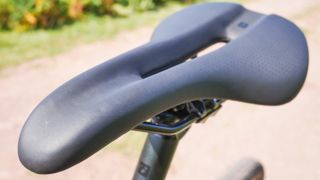
Get up some speed on gravel though and there's no disguising the aluminum build. By 30mph on a fireroad, your hands and feet are taking some serious vibes, and the chatter from sustained speed does reduce comfort.
Switching to carbon at the bar (and at the Bontrager seatpost) would both increase comfort and reduce weight, and though I found the saddle supportive and comfy both for long rides and hard pedaling efforts, it does have steel rails – it's another easy and relatively cheap target for weight loss and vibe reduction.
Alternatively, if you want more speed whatever the trails do, fit the best dropper post that will suit the 27.2mm seat tube and reap the rewards.
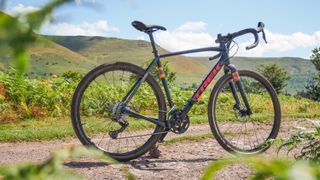
Personally, I would have quite liked the shorter cranks of the smaller sizes instead of the 175mm GRX RX600s fitted here, which would allow an even lower BB for descending confidence, but that's really just preference. The 7.4cm BB drop is pretty low in the scheme of things, cornering feel is predictable, and ground clearance is good.
This is an extremely usable yet still very enjoyable bike. It nails that '2/3rds road bike, 1/3rd XC bike' feel that makes gravel bikes so good for so many things – commuting while avoiding the worst traffic, touring, exploring dilapidated rural lanes, getting in hard climbing efforts away from ANY traffic, or just generally getting out there and enjoying the view.
It's comfortable and reassuring from the off whatever the surface, and the money's been spent in the right places – this is a really solid base for years of riding fun.
Test conditions
- Temperature: Rarely less than 20 degrees C and up to 35
- Conditions: Dry, hard and dusty with almost zero rain
- Trails: Mountain singletrack, bridleways, forest gravel and crumbling rural lanes
Tech specs: Trek Checkpoint ALR 5
- Price: $2,500 / £2,400
- Discipline: Gravel
- Frame size tested: 58cm
- Seat tube angle: 72.5°
- Head angle: 72.3°
- Effective top tube: 59.7cm
- Bottom bracket drop: 7.4cm
- Wheelbase: 105.8cm
- Reach: 41.1cm
- Frame: 300 Series Alpha Aluminium
- Tires: Bontrager GR1 Team Issue 40mm, Tubeless Ready
- Drivetrain: Shimano GRX
- Sizes: 49, 52, 54, 56, 58 (tested), 61cm
- Claimed weight: 9.75 kg / 21.5 lb (56cm)
Steve is a highly experienced journalist and rider who's been involved with bikes of all kinds for more years than he would care to remember. Based in South Wales, he has mile upon mile of swooping singletrack, an array of plummet and winch descents and everything in between right on his doorstep.
Leatt Velocity 4.0 MTB X-Flow Goggles review – excellent venting and airflow
Leatt Impact Shorts 3DF 4.0 review – pedal-friendly and highly breathable protective shorts
Bespoken Word – I’m an analytical addict and Comparing Bike Data is my CBD
Most Popular
- MBA PREDICTS WHO WILL BE ON THE U.S. OLYMPIC MOUNTAIN BIKE TEAM
FLASHBACK FRIDAY: RACING AT MAMMOTH MOUNTAIN, MORE THAN 30 YEARS AGO
OPINION: N+1 IS DEAD
7IDP RELEASES PROJECT.21 HELMET
VIDEO: KRISS KYLE FINDS HIS FLOW IN THE SWISS VINEYARDS
- VIDEO: FEELING THE PACIFIC NORTHWEST’S MID-SEASON STOKE IN ‘SUMMER FLING’
- HOW A BRAND EVOLVED FROM MAKING PIANOS TO EBIKES – THE YAMAHA STORY
- HOW BENTONVILLE TURNED INTO “BENT TENT VILLE”
- SRAM LAUNCHES EAGLE POWERTRAIN RANGE EXTENDER
- MOOTS RELEASES THE ALL NEW MXC CROSS COUNTRY HARDTAIL

Bike Test: Trek Fuel EX 9
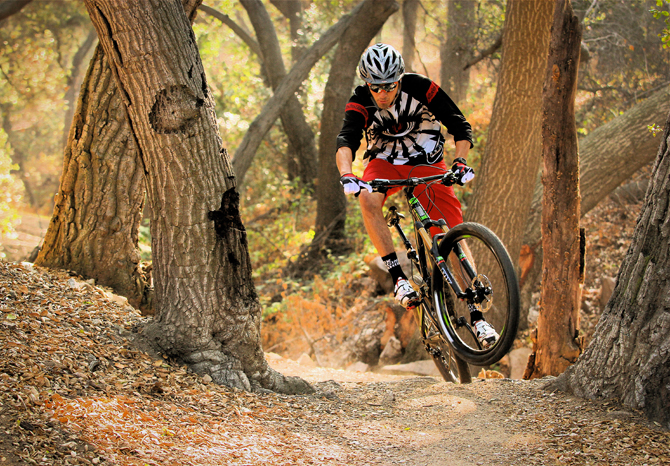
When Trek set out to design the new Fuel EX, they up when the wheel moves deep into its travel. We’ve had wanted to set the bar for mountain bike versatility. The bike they came up with pulls from their extensive ride time and research with some of the best riders on the planet. The aluminum-framed version is not their top of the line (the carbon frame gets that title), but the EX9 sports all the high-end technologies.
WHO IS IT MADE FOR? This bike can work for a huge range of riders, and that’s what being a true trailbike is all about. The Fuel EX9 sports just enough travel to feel aggressive, but not so much that it will hold you back on a long ride or a climb. This bike is all about versatility.

WHAT IS IT MADE FROM? The Alpha Platinum aluminum frame features just over 5.1 inches of rock-gobbling suspension that uses Trek’s proprietary ABP (Active Braking Pivot) design. This design uses a pivot at the dropout inline with the rear axle and a “floating” shock that attaches to the swingarm to keep the suspension active and neutral during braking and pedaling efforts. The frame also sports a tapered head tube, one-piece magnesium rocker, and integrated chainstay and downtube protection.

WHICH COMPONENTS STAND OUT? The shock’s DRCV (Dual Rate Control Valve) technology works by using an additional air chamber that’s only opened up when the wheel moves deep into its travel. We’ve had great luck with this shock technology, but always said we’d like to see it in the fork to offer a more balanced feel. This is the first year Trek has done that. That little bit of extra air keeps the suspension from feeling like you’re getting cheated out of the last 20 percent of your travel from the air pressure “ramping up.” Bravo, Trek.
The Bontrager XR3 Team tires are a perfect fit for the EX. They roll fast and hook up very well in a wide variety of conditions. There was a day when Trek bikes were held back by mediocre, house-brand tire choices, but those days are gone.
HOW DOES IT PERFORM? Setup: Setting up the DRCV should be a hassle, but it’s not. The fork and shock have only one air chamber each to set, and Trek simplifies the process by including clip-on sag meters on both. We set both the fork and shock to 30-percent sag and hit the trails. The beauty of this system is that it can feel both efficient and bottomless with a single setup. The DRCV allows the suspension to move deep into its travel while still delivering a firm pedaling platform. With the Fuel EX, let the fork and shock work their magic.
The rebound damping circuit on the Fuel’s shock is very strong, and we found ourselves running the adjustment near full open. Smaller riders who need lower pressures may have difficulty finding a setting that doesn’t “pack up” on successive hits.
Pedaling: Trek’s DRCV shock and fork (made by Fox) also have Fox’s rider-selected CTD system (Climb, Trail, Descend modes). While the suspension action responds well to all three settings, we found ourselves leaving the suspension in the trail mode most of the time. This bike can do it all when the shock is set right in the middle.

Climbing: The aggressively steep seat tube angle puts the rider right over the pedals, which feels very efficient on long climbs. The plush suspension assists on rough, technical climbs (don’t use the too-firm climb mode in this situation) by allowing the rear wheel to follow the terrain and maintain traction. The 26-inch wheels allow for quick acceleration over obstacles in the climb, and changing lines is almost a subconscious effort.
Cornering: Rumors of the 26-inch-wheeled trailbike being killed off by the 29er and 27-incher are greatly exaggerated. The Fuel EX has something that the big-wheeled bikes can’t exactly match, and that’s maneuverability. The Fuel EX has a snappy and responsive feel in the corners, and the bike loves to be manhandled through switchbacks.
Descending: At the end of a descent, we like to see that we’ve used all the available travel. The DRCV delivers in spades. The front and rear suspension feel exceptionally balanced, allowing you to work the stroke of the shock and fork much more effectively. While the first half of the travel is designed to be efficient, the second half is designed to feel bottomless, and it just plain works. The 5 inches of travel are used so effectively; it feels like the Fuel has even more.
TRICKS, UPGRADES OR TIPS? The Fuel EX has routing for a RockShox Reverb Stealth seatpost with a remote actuation hose that routes through the frame and connects at the bottom of the seatpost rather than at the head. The EX9 doesn’t use that routing and instead comes with the standard Reverb seatpost (with its hose that connects to the seatpost head and routs externally). This spec doesn’t make sense to us. Instead, Trek should spec a less-expensive aluminum post, lower the bike price and let the rider upgrade to the Stealth seatpost if he desires. Using the standard Reverb feels like a compromise where nobody wins.
The rear brake hose clipped our heels when we were pedaling. To remedy this, we rerouted the hose on the inside of the seat stay, but this caused an unsightly rub mark in the paint. With a simple stick-on protector, both problems would have been solved. Add one before your first ride.
BUYING ADVICE The versatility of the Fuel EX9 can’t be understated. It’s not a cross-country racer, and it’s not a descending specialist; instead, it’s designed to ride everything well. The geometry feels like it has E.S.P. and knows your next move before you make it. The maneuverability and flickability built in mean you can make the move happen too.
The DRCV suspension is much more than just marketing jargon. This technology really works and makes the 5 inches of travel feel like more. Bikes like the Fuel EX9 are the reason that 26-inch wheels aren’t dead. They’re just plain fun to ride. If you’re looking for a lively partner that can do everything short of a downhill race, this bike is worth a look.
Corsair Bikes Stikes Gold: Jamie Goldman That Is
Some Riders Feel It is Still Overpriced
THROWBACK THURSDAY: COLIN BAILEY, FATHER OF THE MAXXIS MINION

mountainbikeaction
- Since 1986 - Covering All Aspects of ⛰🚲 #MBAmagazine

- Bike Builds
- Cross Country Bikes
- Downhill Bikes
- Enduro Bikes
- Hardtail Bikes
- Trail Bikes
FASTHOUSE SPEED STYLE ROWEN GLOVE REVIEW
SPECIALIZED CAMBER HELMET REVIEW – INCREDIBLE PERFORMANCE FOR ONLY $35!
YETI TURQ WIND VEST REVIEW – THE IDEAL SPRING COMPANION
FASTHOUSE TRACKER PACKABLE WINDBREAKER REVIEW
VIDEO: FEELING THE PACIFIC NORTHWEST’S MID-SEASON STOKE IN ‘SUMMER…
SPENCER RATHKAMP TAKES ON 4 DIFFERENT RACES FROM XC TO DH WITH THE SPECIALIZED EPIC 8…
VIDEO: HANS REY EXPLORES THE NEXT FRONTIER OF RIDING IN NORWAY
ASK MBA: ARE CARBON WHEELS WORTH THE EXTRA MONEY?
ASK MBA: HOW DO I REPLACE A BROKEN SPOKE?
ASK MBA: WHAT’S THE BEST WAY TO FLY WITH MY BIKE?
ASK MBA: WHY DO MY BIKE’S DISC BRAKE PADS KEEP RUBBING?
INTERNAL ROUTING THE EASY WAY – CHEAT CODES FOR CABLE AND HOSE ROUTING
THE INS AND OUTS OF FRAME PROTECTION – THE BEST WAYS TO KEEP YOUR FRAME LOOKING…
HOW TO SERVICE A PRESS-FIT BOTTOM BRACKET
ASK MBA: SHOULD YOU REPLACE THE ROTOR ALONG WITH YOUR BRAKE PADS?
BIKE CHECK: MARK WEIR’S VERY CUSTOM CANNONDALE MOTERRA
BIKE CHECK: BRYN ATKINSON’S PIVOT SHUTTLE LT E-BIKE
MATHIEU VAN DER POEL TELLS US ABOUT HIMSELF AND HIS MOUNTAIN BIKE, MBA SEPTEMBER 202O
BIKE CHECK: LARS FORSTER’S THÖMUS LIGHTRIDER WORLDCUP
- Mountain Bike Action
- Digital Mountain Bike Action
- Back Issues
- NICA Team of the Month
- B’s Buzz
DESTINATION: CAPPADOCIA, TURKEY – ICY TRAILS AND FAIRY TALES
LOAM PASS ADDS 12 NEW DESTINATIONS JUST IN TIME FOR SUMMER
DESTINATION: WHISKEY RUN OREGON – A NOT SO SECRET RIDING PARADISE
GIRLZ GONE RIDING CELEBRATE WOMEN’S MOUNTAIN BIKING WITH BIG BEAR EVENT IN JULY
VIDEO: TRANSITION FACTORY RACING EP. 1 – FT. WILLIAM
PHOTO GALLERY: THE BEST OF SEA OTTER CLASSIC 2024
READER SENDS: THIS MONTH’S BEST READER-SUBMITTED PHOTOS
READER SENDS – THIS MONTH’S BEST READER SUBMITTED PHOTOS
READER SENDS – THIS MONTH’S BEST READER SUBMITTED PHOTOS
- Anneke’s Blog
- Down The Trail

We tested 9 superbikes to crown our race bike of the year
Cannondale, Canyon, Cervélo, Giant, Scott, Trek (and more!) battle it out
- Sign up to our newsletter Newsletter
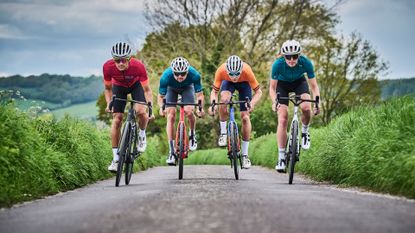
- Overall winner
- Best aero bike
- Best climbing bike
How we test
Gender difference and testers.
The dust has now settled, the bell-lap completed, and after many months of testing and hours of discussion, the results are in for Cycling Weekly’s 2023 Race Bike of the Year award – but we won’t be giving them away quite so quickly.
First, let’s back up to the criteria for entry. Our first stipulation for Race Bike of the Year was that each model must be among the 2023 WorldTour bikes . Vitus, for instance, produces some excellent bikes – and at particularly keen price points – but none of its models met our first criterion.
Second, where a brand produces multiple models that are raced at WorldTour level (Trek has no fewer than three, for example) we’ve chosen the platform we find most notable. This has seen us include the new Giant Propel over the venerable TCR, for example, and the new Cannondale SuperSix over the similarly ‘mature’ SystemSix.
Which brings us neatly on to the topic of bike design, or rather the dichotomy between aero bikes and climbers’ bikes. Over recent years, aero bikes as a category have seen some huge shifts in their remit. The tropes of aero bikes being anchors on the hills and shopping trolleys on anything but the smoothest tarmac are long gone. The latest crop of the best aero bikes have haemorrhaged excess weight and boosted comfort levels – all bikes on test can be built to the UCI weight limit and can fit 28mm tyres as a minimum, some going up to as much as 34mm.
Convergent design

Likewise, climbers’ bikes haven’t missed the march of progress. Naturally, weight is still a prime concern, as is vibration dampening comfort enhancement and geometries designed to see riders down the mountains as well as up. But alongside that, many of the learnings from aero bikes are being applied – thicker, kammtail tubes, dropped seat stays, hidden cables and more are all now appearing on these lighter weight models.
Muddying the waters further are aero bikes which have eschewed the orthodoxy of ‘big tubes equals fast’ and are seeing (reported) aero gains with skinnier frames – and reaping the benefits of a lower weight and better compliance as a result. The Giant Propel, Colnago V4RS and Wilier Filante are all aero bike platforms, but their profiles don’t look much different to the climbers’ bikes of the Cannondale SuperSix and the BMC Teammachine. With that in mind, we’ve held the door open to both aero and lightweight models in our Race Bike of the Year grouptest. But, noting the sizable differences between models at either end of that spectrum, we are also giving awards for the Best Aero Bike and Best Climbers’ Bike on test – in addition to awards for the Best Value Bike and our overall Race Bike of the Year winner.
With one eye on price, we called in bikes with second-tier groupsets, safe in the knowledge that they all perform as well as the range-toppers. Due to availability, some bikes were supplied with range-topping groupsets, but have not been marked up because of this.
Cycling Weekly's Race Bike of the Year 2023
You can trust Cycling Weekly. Our team of experts put in hard miles testing cycling tech and will always share honest, unbiased advice to help you choose. Find out more about how we test.
Wilier Filante SLR
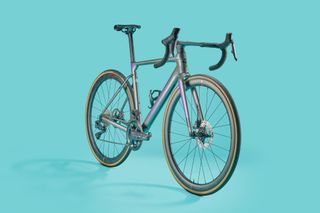
Wilier can sometimes end up flying a little under the radar, which is a keen loss for anyone who overlooks the Italian marque as, despite its 117-year heritage, Wilier still remains at the cutting edge
Released in 2021, the Wilier Filante SLR was actually among the first instances of this current wave of ‘lightweight aero’ bikes. In the last 12 months, Giant and Colnago have both followed suit with the Propel and V4RS respectively, with each boasting aero gains without butting up against the UCI’s 3:1 rule – and saving a handy amount of weight in the process.
It’s hard not to fall in love with the Filante SLR. It dances up the climbs, accelerating and propelling you indistinguishably from some wholly specific climbing bikes. But where those models then become a bit of a drag on the flat, twisting the screw a little when it’s your time on the front, the Filante SLR cuts through the air and holds its speed.
More so than almost any other bike on test, the Filante SLR finds itself in contention for (almost) every category we have: Best Climbers’ bike, Best Aero Bike, Dream Bike, Race Bike of the Year – the one exception is the ‘Best Value’ category, which the Filante heroically concedes.
Unfortunately for a jack of all trades, the Filante SLR remains a master of none. In the climbing and aero categories, it’s edged out in both by models with a bit more specificity. The Filante’s balance between handling comfort, aero and weight – although excellent in its own peppy way – is nevertheless not quite up there with the more tech-heavy Cervélo S5.
Whether or not the Wilier Filante SLR should have taken the spot for ‘Dream Bike’ is harder to judge – no doubt there will be those who wholly disagree with our verdict. But, hopefully, even if you reject our conclusion, there will be something in the argument you can appreciate – read on for that.
All that’s to say that the Filante SLR – as with all the models here – is an exceptionally good bike. Only the very best performers in all our reviews were put forward for consideration here. But, with nine bikes and only five categories, some will come away with nothing more.
- Price range: £9,710 - £13,300
- Model tested: £9,710
- Weight: 7.38kg
- Rim depth (wheels): 42mm Wilier Triestina SLR42KC
- Internal rim width: 21mm
- Tyre width (model): 28mm Vittoria Corsa
- Groupset: Shimano Ultegra
- Saddle: Selle Italia Flite Boost
Canyon Aeroad CF SLX 8
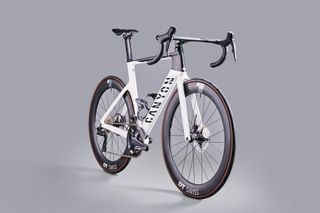
The current Canyon Aeroad is one of the more ‘established’ models on test but despite the advances of its rivals, it still feels palpably fast.
The Aeroad packs in a suite of lovely touches. The stack height can be adjusted without cutting the steerer, the seatpost provides a substantial amount of vibration dampening flex, and the handlebar width can even be adjusted.
However, the narrowest the bars can be set is 39cm, which isn’t supernarrow for the middle sizes and is quite wide for the smallest when compared with rival machines.
Also, those DT Swiss wheels do come with the narrowest internal rim width out of all bikes on test, making the 25mm GP5000 front tyre visibly thinner than those of the Cannondale SuperSix (also 25mm). The result is a chattery front end which bleeds speed on coarser tarmac.
The Aeroad is still a great bike and is extremely fast on the flat. It could do with shedding a bit of weight, upgrading the handlebars and bringing the wheel and tyre choice a little more up-to-date.
Out of all the top-end models, it is also the cheapest, being the only one to still come in at just four figures.
- Price range: $4,999 - $9,499 / £3,849 - £9,999
- Model tested: $6,499 / £6,199
- Weight: 7.53kg
- Rim depth (wheels): 62mm DT Swiss ARC 1400 Dicut
- Internal rim width: 20mm
- Tyre width (model): 25/28mm Conti GP5000
- Saddle: Selle Italia SLR Boost Superflow S manganese
Trek Madone
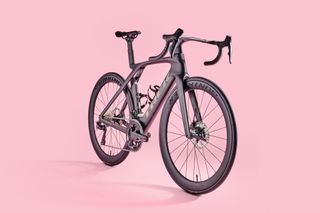
The Trek Madone received a major update last year, addressing the main criticisms of the previous iteration. First, it’s gone on a crash diet, shedding 300g through ditching the Iso-Speed vibration dampening system. Second, that seat-tube hole was added to help preserve the ride quality. And finally, a combination of new tube shapes and handlebar is said to save about 60 seconds over an hour’s ride, whether you’re travelling at 45kph or 25kph.
Does the seat-tube hole really make a difference to the comfort? Well, it does ride more smoothly than that wedge of a seatpost would suggest, but not as smoothly as other models that have built in flex to the seatpost itself, such as the Aeroad and the Foil.
It’s the handling that offers the greatest surprise. It really is incredibly fast, responding to the smallest shift in weight and the tiniest tweaks of the bars. There is variation between the other bikes on test – some handle a bit faster, others a bit slower – but the Madone stands very far apart from any of them. Some riders may appreciate this, but others might prefer a model which feels more controlled; you can get closer to your limit if you’re confident you won’t slip past.
On the other hand, the Madone was an absolute speed weapon. Those 51mm deep Bontrager Aeolus Pro wheels and the deep-section frame likely had something to do with it, but the most significant factor was the newly designed handlebar, which is the narrowest by quite a margin of all those we had on test and provided good wrist support for hunkering down into the ‘aero-hoods’ position.
It’s a shame the top-end and entry-level models are the third most expensive on test, in their respective categories. The Madone is a great bike, then, for those who can afford it.
- Price range: $8,000 - $13,200 / £7,600 - £14,500
- Model tested: $9,050 / £10,200
- Weight: 7.5kg
- Rim depth (wheels): 51mm Bontrager Aeolus Pro 51
- Internal rim width: 23mm
- Tyre width (model): 25mm Bontrager R3 Hard-case
- Saddle: Bontrager Aeolus Elite
Colnago V4RS

For a brand steeped in so much heritage and tradition, the Colnago V4RS was developed in quite an unusual way.
Five different prototypes were produced and given to the UAE Emirates team – their favourite being the version which saw final production. The result clearly seems to be working for Tadej Pogačar, given his wins at Paris-Nice, Tour of Flanders, Amstel Gold and Flèche Wallonne.
And the V4RS is a pure joy to ride. It’s fast off the mark and holds its speed very well on rougher roads and lanes, thanks in no small part to the 50mm-deep wheels wrapped in 28c Pirelli P Zero tyres. Point it skywards and you immediately reap the gains of the stiff frame and low weight. But it’s long, snaking climbs with gradients of around 5% where the V4RS is wholly in its element.
That said, it doesn’t have the necessary specificity in relation to its weight-shedding or aero qualities for it to win our Best Climbers’ Bike or Best Aero Bike categories. Instead, it offers an excellent balance between the two. It’s a strong contender for overall Race Bike of the Year, but its bent towards lightweight over aero, and those Shimano wheels, costs it the top spot there.
Finally, the price. The top-end V4RS is one of the more expensive models, but that’s only because a few brands have all chosen £12,500 as their cap. The V4RS comes in at £12,599 but whereas most other brands offer their frames in a lower spec and a heavier layup, there isn’t an ‘entry-level’ version of the V4RS, putting it far out of reach for most.
- Price range: £N/A - £12,599
- Model tested: £12,599
- Weight: 7.15kg
- Rim depth (wheels): 50mm Shimano Dura-Ace
- Tyre width (model): 28mm Pirelli P Zero Race
- Groupset: Shimano Dura-Ace
- Saddle: Prologo Scratch M5 CPC
BMC Teammachine
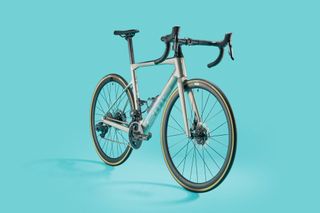
The BMC Teammachine has long been the Swiss brand’s lightweight platform but with every refresh, it gets ever more aero – the boxy, angular shapes are almost in line with the latest aero models from Giant, Wilier and Colnago.
As a result, it has snappy acceleration and excellent handling – it feels as composed when climbing or descending but also holds its speed admirably well on the flats. The tyres are Vittoria Corsas, like those specced on the Cervélo S5, but the Teammachine plumps for the 25mm option and pairs them with ‘old-school’ rims, with a narrower internal rim width.
The result is that the profile isn’t as rounded and the tyres’ shoulders are a little steeper. This leads to a little less confidence in the corners when banked over, and a little less comfort.
Two huge plus points for the BMC are, firstly, that you’re not tied to using a proprietary stem and one-piece handlebar if you don’t wish to. And, secondly, that the entry-level build of the Teammachine is the second cheapest out of all the models on test.
However, as great as the Teammachine is, it gets edged out by the Cannondale SuperSix in the Climbers’ category, by the Giant Propel for Value and by the Cervélo S5 for the overall title – but that is very much a reflection on the competitiveness of the field than the Teammachine’s own performance.
- Price range: $3,200 - $16,000 / £3,100 - £15,000
- Model tested: $8,000 / £7,600
- Rim depth (wheels): 35mm CRD-351 SL
- Internal rim width: 17mm
- Tyre width (model): 25mm Vittoria Corsa
- Groupset: SRAM Force
- Saddle: Fizik Argo Vento R5
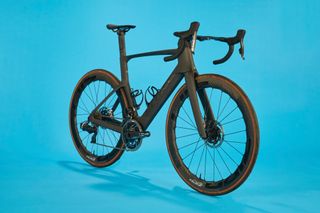
The Scott Foil received a complete overhaul last year and what has been achieved is highly impressive. The frame is significantly lighter than the tube depths would suggest, its straight line speed is blisteringly fast, and the seatpost has been redesigned to allow much greater flex.
The wheel and tyre combo adds yet more speed. We’ve tested the Zipp 454 NSW and Schwalbe Pro One tyres independently, and they are both top performers. The Zipps combine aerodynamics with a low weight, helping on the hills as well as the flats. The generous internal rim width really plumps out the tyres, too, getting the most from the Schwalbes.
The frame, handlebars and body position similarly combine for a super-fast ride. Were it not for the Trek Madone, the Scott Foil would have been perhaps the strongest contender for the crown of best aero bike. However, the stock bars are 42cm and the whole size range is similarly traditional.
Then comes the price. Although this isn’t a consideration for most of our category winners, it can’t be ignored. The flagship spec of the Foil comes in at £15,899, head and shoulders above all other models and the only bike to come in over £15,000.
- Price range: $4,800 - $16,000 / £4,799 - £15,899
- Model tested: $16,000 / £15,899
- Weight: 7.2kg
- Rim depth (wheels): 58mm Zipp 454 NSW
- Tyre width (model): 25mm Schwalbe Pro One
- Groupset: SRAM Red AXS
- Saddle: Syncros Belcarra V-Concept 1.0
Cannondale SuperSix Evo Hi Mod 2
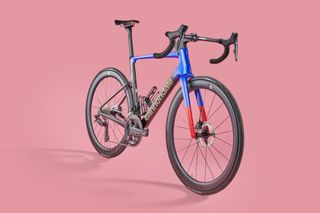
The Cannondale SuperSix Evo received a slew of aero updates in its 2019 iteration. The latest update, unveiled in just March of this year, has been more evolution than revolution – but still packs aero tweaks to the tune of 11w saved over the previous version. Again, like the BMC Teammachine, this is a climbing bike which bears a striking similarity to the aero models of Giant, Wilier and Colnago.
Personally, I love a lightweight frame matched with deep-section wheels – and that’s exactly what the SuperSix Evo provides. At a claimed 770g in a painted 56cm frame, it comes in as the lightest on test – and those 50mm deep HollowGram wheels, although not the lightest for their depth, match most of the hoops here millilitre for millilitre.
The result is a bike that is lightning fast to accelerate and holds its speed well. It’s particularly well suited to surprise attacks and a spot of UK Strava hunting, where momentum into the brutally steep (but relatively short) climbs is a key factor for success.
It’s the climbs where the SuperSix Evo really shines. Not only is it whisper light, the geometry feels particularly well suited for climbing out the saddle and the resultant shifting weight distribution. Bombing down the other side, it’s easy to push the limits that bit further, with the bike feeling poised, but controlled. It’s a worthy winner of our best climber’s bike award. But while impressively fast on the flat for a climber’s bike, sounding out the vibrations better than others, it is neither as fast, nor as comfortable as the Cervélo S5, although the SuperSix does steal the march on the climbs.
In terms of the price, the top spec of the SuperSix Evo is up there with the highest, although mercifully still below the £15,000 mark. Perhaps surprisingly, the entry-level model is the fourth cheapest on test – which you might not have expected from Cannondale.
- Price range: $4,500 - $15,000 / £4,000 - £12,500
- Model tested: $8,300 / £8,250
- Weight : 7.3kg
- Rim depth (wheels): 50mm HollowGram R-SL
- Tyre width (model): GP5000 25mm
- Saddle: Prologo Dimension TiRox NDR, Ti
Giant Propel Advanced Pro 1
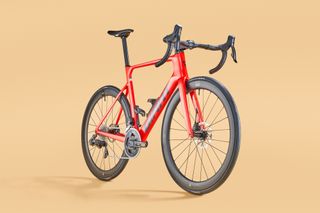
The Giant Propel has long been one of the best aero bikes on the market, particularly when considering the performance and spec you get for the price – and this latest iteration has brought a whole host of great improvements to the platform. It misses out on the title of ‘grouptest winner’, but is a worthy victor in our ‘best value’ category.
The first point to make relates to the scale of the overhaul. Previously, the Propel had a long-established position in the pantheon of deep-tubed aero bikes.
The Taiwanese giant has now pivoted to a much slimmer design, one which ascribes a greater priority to both weight and comfort. But aerodynamics haven’t been left by the wayside – Giant claims that even with its slimmer tube shapes, the new Propel is 6.2 watts faster at 40kph than the previous model.
And it does certainly feel fast. Tucked up on the flatter sections of the testing loop, I was really able to motor along, holding my speed without any issues.
With slimmer tubes and shallower wheels (still 50mm deep on the Giant), I didn’t get caught by the crosswinds across the open fields the same as I was on the Canyon. Also, with a combination of tyres mounted on wider rims and what felt like much better vibration from the front end of the bike, I wasn’t as shaken as on the Aeroad and felt smoother and faster on the Propel. Improvements all round.
One of the best parts, for me, is that Giant has brought the Propel closer in line with its TCR climbing bike. Amongst other things, the wheelbase has been shortened and the trail has been increased. The result of this is a bike that feels playful but controlled. One that doesn’t leave you feeling like you’re dancing on the edge of a razor but still responds lightning-fast to changes in direction.
Whilst I do have a soft spot for aero climbing bikes, that’s not an unreflective preference. If an aero bike picks up some elements of a climbing platform, honing its handling and dropping the weight, that’s a clear win for me. In its top spec lay-up Giant has managed to get the Propel down to a claimed 845g, the second lightest of the aero bikes on test, just behind the Colnago V4RS.
So why hasn’t the Giant Propel won the test? Well, great though the handling, comfort and straight-line speed are, the Cervélo S5 does stand above the Propel in all these areas. Where the Giant really excels is in all of these qualities, balanced against its price.
The top model spec is actually only the second cheapest on test, the Canyon Aeroad impressively manages to steal a march there, with the German outfit limboing under five figures and Giant coming in at £11,999.
It’s at entry level where the Propel really stands out, with the cheapest starting price of all the models on test by about 30% – it’s the only one to come in under £3,000. If you’re interested in reaping the improvements in handling and Giant’s latest aero-modelling (but are on a tighter budget) this is your best option by far. Giant has managed to combine an excellent bike with that exceptional price.
- Price range: $6,000 - $12,500 / £2,999 - £11,999
- Model tested: $6,000 / £5,499
- Weight: 8.46kg
- Rim depth (wheels): 50mm Giant SLR 1
- Internal rim width: 22.4mm
- Tyre width (model): 25mm Giant Gavia Course 1
- Groupset: SRAM Rival AXS
- Saddle: Giant Fleet SL
Overall winner - Cervélo S5
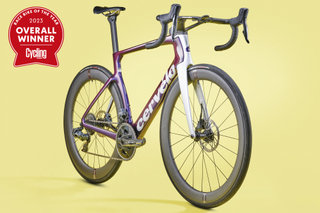
New generations and iterations have been coming thick and fast over the last 12 months; the Cervélo S5 is yet another model which received an update last year - including a readymade palmarès.
The S5 wore both yellow and green during the 2022 Tour de France, under Jonas Vingegaard and Wout van Aert, respectively. It was also piloted to wins in both the women’s and the men’s 2021 Ghent–Wevelgem by Marianne Vos and van Aert.
With its combination of straight-line speed, cornering prowess and magic-carpet ride quality, the S5 is also a worthy winner of Cycling Weekly’s 2023 Race Bike of the Year award. Although that’s not to say that the choice was straightforward and obvious… In a straight-up battle of the specsheets, the S5 wouldn’t fare nearly as well. But if you’ve come this far, you’re clearly not afraid of a delve into all the nerdy details – so let’s jump straight in and tease apart exactly how the S5 manages to be greater than the sum of its specs.
Aero isn’t everything
First, let’s address the nuance of why the S5 clinches the title of Race Bike of the Year, but not Best Aero Bike - and, conversely, why the Trek Madone earnt the latter but missed out on the overall top-spot. The first part is quite easy to explain. Although aero is a hugely important factor in the winning potential of a race bike, there are also other considerations which must be taken into account. Handling is a key area – having confidence, control and more ‘elastic limits when railing round the corners is itself a major boon to your speed. Equally, just how well a bike minimises vertical deflection has big consequences for both the rolling resistance and comfort.
The Trek Madone excelled particularly in terms of its aero performance, helped in large part by its quite unique handlebar design and sizing. However, the Madone is let down by its handling. As mentioned, personal preference is a factor here, but the Madone is notably more twitchy than all the other models on test. Its comfort, although certainly not jarring, isn’t the best either.
Those are two areas where the Cervélo S5 shines particularly, but let’s finish our discussion of the aero first. Although the S5 isn’t the hands-down most windcheating model on test, it still rides very fast. The updated tubes from the previous iteration likely play a part (the new S5 is claimed to be seven watts faster), but also the comfy shaping of the bars makes it easy to hold the ‘aero-hoods’ position for long durations – albeit with a 42cm centre-to-centre width, rather than the 39cm of the Madone.
But it’s the handling which really sets the Cervélo S5 apart. It’s quick to respond to a change of line but manages to remain far from being twitchy. The result is that it’s just so easy to really rail the corners. You can be confident that you won’t accidentally exceed your limits, that you can get so much closer to them – and that really shows.
Though the balance of the geometry is predominantly responsible for the S5’s balanced handling, this particular wheel/tyre combo plays a sizable role, too. To some extent, the bikes shouldn’t be judged too harshly on their wheels, as this is something which can be changed quite easily. That said, we are comparing fully built bikes here, rather than just framesets, so I think credit should absolutely still go to where it is due.
The Reserve 52|63 wheels have a wide internal rim width, coming in at 25mm up front and 24mm out back. This plumps the 28mm Vittoria Corsa tyres out to over 31mm – but it also makes the shoulders of the tyres much more gently sloping than any of the other models on test.
Quality ride
The result is that not only do you get a larger footprint providing more grip, you also get a much more progressive feeling when loading them up and banking over heavily in tighter corners. It also means that the ride quality of the S5 is actually better than all others on test – even those models with fancy flexing seatposts. Speed over coarser sections of tarmac is palpably faster, too, as the bumps are just absorbed rather than pinging the bike about.
There’s no getting away from the weight of the S5. At 8.22kg for this SRAM Force build, the S5 is heavier than comparable models. The Scott Foil (albeit with SR AM Red) came in at 7.28kg. Despite this, the S5 doesn’t feel ‘heavy’ to ride and, in most cases, gains in aero and rolling resistance will help you more than solely focusing on the weight.
The S5’s gains across the board – it’s handling, comfort and aerodynamics – more than make up for the extra mass. As the complete package, the Cervélo S5 deservedly wins our 2023 Race Bike of the Year award.
- Price range: $9,000 - $13,000 / £9,200 - £12,500
- Model tested: $9,000 / £9,200
- Weight: 8.2kg
- Rim depth (wheels): 52/63 Reserve
- Internal rim width: 24.4mm
- Tyre width (model): 28mm Vittoria Corsa TLR G
- Groupset: SRAM Force AXS
- Saddle: Selle Italia Novus Boost Evo SuperFLow Ti
Best aero bike - Trek Madone

In aerodynamics, the rider and bike act as a system, with the former contributing 80 per cent of the aerodynamic drag and the latter just 20 per cent. You’re looking at a fraction of that fraction when considering frames, wheels, handlebars etc. With that in mind, the question is not so much what CdA your bike has, but what CdA your bike can give you…
And the bike that best ticks this box is the Trek Madone. The handlebars – the narrowest on test – are a really excellent design, with that curve with its two distinct bends which supports your wrists much better than more traditional bars and enables you to stay lower for longer.
Typically, a size 54cm frame will be specced with 42cm bars and the Madone’s bars are, nominally, 42cm – but that’s just at the drops. Up at the hoods, the bars narrow to just 39cm, helping to slot you into a more aero position without compromising your stance width when descending.
Not only that, but the bar width varies greatly with the frame size. In the smallest 47cm model, the handlebars measure just 35cm at the hoods – there are many handlebar models which don’t even dip below 38cm, so it’s great to see smaller riders being accommodated for.
By the way, the smallest three sizes of the Trek Madone come with a wider saddle than the largest frame sizes, as disproportionately more women ride those sizes and the majority of women are better suited to a wider saddle. Trek doesn’t make a big deal about this, it’s just quietly getting on with what’s right and makes sense – you’ll only notice if digging through the spec sheets.
Dream bike - Colnago V4RS

Although we always approach our testing as analytically as we can, some space must be left to consider the more intangible elements of the bikes – which model lights the strongest flame of desire in the reviewer?
What we’re looking for here is a thrilling – not necessarily the fastest – ride and an elision of heritage and cutting-edge progress: a modern classic.
It wasn’t an obvious choice. Wilier wins in the heritage stakes but both Cannondale and Colnago – founded in 1971 and 1968, respectively – embody their own traditions.
All these brands provide the warm glow of a history we’re looking for, but the Colnago V4RS clinches it with its aggressive yet composed ride feel. It’s got an urgency which goads you into attacking on the hills and pushing on the flats.
Plus Colnago does a good job of releasing limited-edition, high-spec versions of this bike, so if money really is no object, you can own a one-off bike that will not only look like a work of art, but ride as well as anything in the pro peloton.
Best climbing bike - Cannondale SuperSix Evo Hi Mod 2
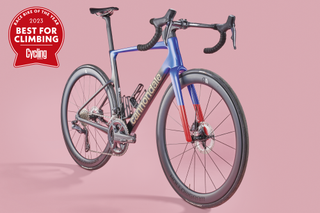
In the pro peloton, where so many aero bikes can be built up to the UCI weight limit, it’s a fair question whether climbing bikes have much of a place any more.
But for those of us not governed by the vicissitudes of the UCI, there are still good reasons why climbing bikes still have a place. The first, and most obvious, is that without a limit, you can reap the benefits of lighter frames and components.
Even if you don’t have the inclination (or the funds) to go full weight-weenie, climbing bikes tend to be lighter for a given price and spec. You can get a better balance of speed and weight at a better price with a climbing bike.
Also, climbing bikes tend to be a bit more comfortable (largely thanks to thinner tubes) and have a more ‘inspiring’ geometry than the best aero bikes.
And that essentially sums up what we’re looking for in the best climbing bike – a low weight, a snappy geometry, comfort, but also optimisations for speed.
After all, so many British climbs are best tackled with a bit of momentum, and many of the most beautiful European mountains have quite shallow gradients thanks to their profusion of hairpin bends – meaning that, with the resultant higher speeds, aero has more importance. Of all the models here, it was the Cannondale SuperSix Evo which hit this brief the best.
Best value - Giant Propel
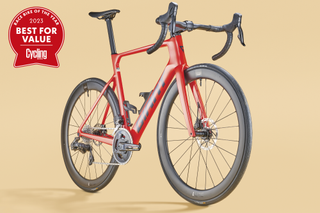
To go into a little more detail on what makes the Giant Propel such excellent value for money, part of this is down to Giant choosing to spec the frameset with more affordable components.
This is precluded by some other frame manufacturers – for instance, the Cervélo S5 isn’t compatible with mechanical groupsets. That might allow for minute performance gains, but it does feed into cycling becoming an ever more exclusive (and expensive) sport.
The Giant Propel (and the BMC Teammachine) are the only models on test which are actually specced with Shimano 105 11-speed mechanical groupsets. The Canyon Aeroad (next cheapest) only goes as low as 11-speed mechanical Ultegra and the Cannondale SuperSix (fourth cheapest entry level option) begins with 12-speed Di2 Shimano 105 .
Functionally, Shimano 105 is a truly excellent groupset – I can tell you now that if you’re struggling to make the step up to a second-cat racing licence, the slight weight savings of Ultegra, motor powered derailleurs, or an extra sprocket aren’t really going to make the difference. You’d be much better off saving that money and investing that into a better bike fit – which might include a new saddle, stem, handlebars and crankset with shorter cranks. After that, it’s your tyres and then your wheels that you should be upgrading.
The savings that can be made and then reinvested by going for a 105 groupset are huge, so hats off to Giant for offering that.
If you are set on electronic gears, though, Giant is edged out by that Cannondale SuperSix Evo, which comes in at £4,000 compared to £4,499 – but you get deep-section carbon wheels with the Giant rather than shallow-section alloy hoops on the ‘dale, so in terms of what you’re getting for your money, the Giant remains the better deal.
We split our testing protocol into two halves: (1) back-to-back testing on a set loop and (2) the long-term testing all of the bikes we review are subject to. Through this, we were able to rack up a cumulative nine months of testing, as well as gaining insights through direct comparison by riding on the same day, in the same conditions and on the same roads.
Our tech features editor, Stefan Abram, took the honour of riding the bikes back-to-back on a painstakingly scoped loop in the North Wessex Downs in order to ensure a little bit of everything was taken in: flat and straight riding in the lanes, a string of tight corners, a stiff climb and a descent – which, all taken together, established the comparative ride quality, handling, perceived speed and climbing prowess.
But there is no substitute for simply racking up miles on a greater variety of roads, terrains and conditions. Here, Hannah, Simon and Anna put in the grunt work and all of their individual reviews will be published in subsequent magazine issues and online throughout the remainder of this year.
WorldTour bikes are eye wateringly expensive, so although we have reviewed these models in their swanky specs, we’ve also detailed the entry point of each bike’s range and, as you’ll see, there’s quite a variance.
And so, equipped with the detailed takes from the wider team and Stefan’s back-to-back testing – and after many, many hours of in-depth discussions – we’ve arrived at our conclusion of which model is the worthy winner of Race Bike of the Year and each of the individual categories.
Continuing research and analysis has seen the consensus shift on the relevancy of women-specific geometry/bikes .
Although there are statistical differences between the ‘average’ man and woman, the reality is that we all exist somewhere on the bell curve: some women have proportions closer to that of the ‘average’ man and some men have proportions closer to that of the ‘average’ woman.
Bikes should never have been labelled for ‘men’ or ‘women’ in the first place, but rather for the body shapes they were trying to accommodate. Producing bikes in smaller frame sizes is important. Giving the option for finishing kit which is more likely to suit a female rider is important. Offering two bikes with different geometries for a man and a woman who both ride a 54cm frame isn’t so much – as is evidenced by the fact that all of the women’s WorldTour teams ride unisex bikes.
With that in mind, we had an even split between male and female testers for our Race Bike of the Year testing.
Hannah Bussey: With the Peak District lying on her doorstep, Hannah’s stamping ground isn’t short of brutally steep, and sustained, climbs – a fitting anvil for testing the lightest bikes.
Simon Smythe: The hedgerowed lanes of Sussex and Surrey don’t have the elevation differentials of craggier climes, but Simon’s home roads have been a faithful testing ground for many, many bikes.
Anna Abram: After departing the South East for South Wales, bigger hills, smaller roads and sterner tests for weather-sealing have all been on the menu. But those fast and flat valley roads still give plenty of scope for quickly racking up the miles.
Stefan Abram: Stefan’s home roads in Wales likewise provide a huge range of riding. But this has been supplemented by back-to-back testing in the North Wessex Downs, near to Cycling Weekly’s Reading offices.
This full version of this article was published in the 25 May 2023 print edition of Cycling Weekly magazine. Subscribe online and get the magazine delivered to your door every week.
Thank you for reading 20 articles this month* Join now for unlimited access
Enjoy your first month for just £1 / $1 / €1
*Read 5 free articles per month without a subscription
Join now for unlimited access
Try first month for just £1 / $1 / €1
Get The Leadout Newsletter
The latest race content, interviews, features, reviews and expert buying guides, direct to your inbox!
After winning the 2019 National Single-Speed Cross-Country Mountain Biking Championships and claiming the plushie unicorn (true story), Stefan swapped the flat-bars for drop-bars and has never looked back.
Since then, he’s earnt his 2ⁿᵈ cat racing licence in his first season racing as a third , completed the South Downs Double in under 20 hours and Everested in under 12 .
But his favourite rides are multiday bikepacking trips, with all the huge amount of cycling tech and long days spent exploring new roads and trails - as well as histories and cultures. Most recently, he’s spent two weeks riding from Budapest into the mountains of Slovakia .
Height: 177cm
Weight: 67–69kg

Slovenian outsprinted Giulio Ciccone in the final kilometre of the summit finish at Le Collet d'Allevard to take over the yellow jersey from Remco Evenepoel
By Tom Thewlis Published 7 June 24
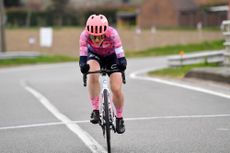
Banks recently revealed details of her nine month battle with anti-doping authorities which resulted in her receiving an unparalleled 'No Fault or Negligence' ruling
Useful links
- Tour de France
- Giro d'Italia
- Vuelta a España
Buyer's Guides
- Best road bikes
- Best gravel bikes
- Best smart turbo trainers
- Best cycling computers
- Editor's Choice
- Bike Reviews
- Component Reviews
- Clothing Reviews
- Contact Future's experts
- Terms and conditions
- Privacy policy
- Cookies policy
- Advertise with us
Cycling Weekly is part of Future plc, an international media group and leading digital publisher. Visit our corporate site . © Future Publishing Limited Quay House, The Ambury, Bath BA1 1UA. All rights reserved. England and Wales company registration number 2008885.
Dreaming about your next bike is awesome — but wanna know what’s even better? Taking it for a spin before you ride home with it. Whether you’re looking for a mountain bike for ripping up the trails, a featherweight road bike for long climbs, a city bike that’s perfect for fun spins and commutes, or an electric bike that adds boost to your personal pedal power, your local Trek store is ready to get you set up on a free test ride.
- Go! E-bikes
- Accessories
- Find a retailer
ABOUT ELECTRA
- Electra history
- Flat Foot Technology
- Brand partners
- Electra Funbassadors
- Work at Electra
- Customer care
- Bike registration
- Manuals & user guides
- Shipping & delivery
- Newsletter signup
- Global distributors
- How to shop safely
- Privacy policy & terms of use
- Accessibility
- Cookie policy
- California Transparency Act
United States / English
- © Electra Bicycle Company 2024
- Critérium du Dauphiné stage 7 Live - Summit finish GC battle
Trek teases secret 'invisible' new gravel bike in wake of Unbound
Is this the new Trek Checkpoint, or another amalgamation of models?
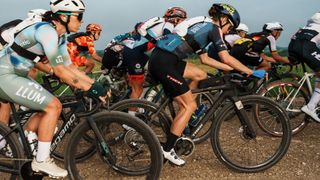
The mud - or dust this year - is slowly settling after a weekend of fantastic racing at Unbound Gravel 2024.
The racing there provides heaps of new and interesting gravel tech, products and hacks to deal with the challenging route. We have a premium Unbound mega tech gallery for you to enjoy, along with a pair of custom-painted Factor Ostros , a brace of canary yellow Colnago G4-Xs and three Felt gravel race bikes .
One bike that we nearly missed is what looks to be a new Trek Checkpoint gravel rig, teased online by the brand itself, and shown up in a few sneaky shots.
We don't know if this bike will be a Checkpoint or a brand-new model. Many brands have multiple gravel bikes in their lineup, with racy models alongside more adventure-friendly models. Trek still only has the Checkpoint as a dedicated gravel bike, alongside the Boone cyclocross bike and the Domane all-road bike.
Trek also has a new road bike in the works and we aren't sure of the name of that bike yet either, with the rumours suggesting it will be an amalgamation of the Madone and the Emonda. With that in mind, let's not assume anything here.
Details of the new gravel bike are even scarcer than the road bike, but we think it's safe to say a new bike is on the way, along with perhaps a new integrated carbon fibre handlebar and stem, and Bontrager gravel tyres from what we can make out from our online snooping.
The @trekbikes Instagram account made the below post. Blanking out the new bike and pretending it's not there is one way of creating a bit of positive chat ahead of a new bike release.
Get The Leadout Newsletter
The latest race content, interviews, features, reviews and expert buying guides, direct to your inbox!
We did, however, manage to find a few sneaky shots, courtesy of the official Unbound press photos, and the MAAP.CC Instagram account, showing of the new bike under racers Russell Finsterwald and Hayley Hunter Smith, both of whom race for the Trek Driftless gravel race team.
A post shared by Trek Bicycle Company (@trekbikes) A photo posted by on
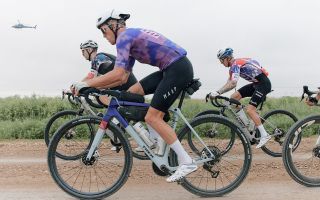
The bike raced by Finsterwald (and likely a few other athletes) has a regular seatpost instead of the integrated unit with topper mast found on the existing top-level Checkpoint SLR.
It looks as though the Isospeed has been redesigned, with a single pivot point sitting just in front of the seatpost, and a seat tube that's a good amount deeper than the seatpost that sits inside it. Interestingly, the down tube storage box seems to have disappeared. Will this be a race-focused, pared-back model?
There also looks to be top tube mounts for bags which the existing bike has, and a carbon integrated handlebar we assume from the Bontrager component family.
We'll keep our eyes peeled for more details and see if Trek will give us any details in the meantime, and we'll be sure to update this story when we know more.
A post shared by MAAP (@maap.cc) A photo posted by on

Thank you for reading 5 articles in the past 30 days*
Join now for unlimited access
Enjoy your first month for just £1 / $1 / €1
*Read any 5 articles for free in each 30-day period, this automatically resets
After your trial you will be billed £4.99 $7.99 €5.99 per month, cancel anytime. Or sign up for one year for just £49 $79 €59
Try your first month for just £1 / $1 / €1
Tom joined the Cyclingnews team in late 2022 as tech writer. Tom has over 10 years experience as a qualified mechanic with 5 or so of those being spent running an independent workshop. Tom has ridden and raced bikes from an early age up to a national level on the road and track and has ridden and competed in most disciplines, even the odd bit of bike polo. Tom is as happy tinkering away in the garage as he is out on the road bike exploring the Worcestershire lanes.
Quoc M3 Air review: Fantastic aesthetics and on-trend right now, but is there something missing
New Bianchi Arcadex adventure gravel bike adds internal frame storage and 50mm tyre clearance
Tulsa Tough Criteriums Night 1: Ryan, Lamperti clinch the top wins
Most Popular
Trek Bikes - The world's best bikes and cycling gear
Online bike shopping made easy
Your perfect bike may already be in a store near you. Browse local inventory online for the fastest availability.
Upon arrival, your bike will be assembled by certified bicycle technicians and made ready to pick up or deliver to your home.
If you’re not in love with your bike within the first thirty days, we will take it back without any additional charges or hassle.
Your local bike shop has the knowledge, products, and expertise to help you get the most out of your new bike.
Back-to-back bike of the year
Slash - 2023 Bike of the Year
Fuel ex - 2022 bike of the year.
We’re a different kind of bike company
Used bikes, certified awesome by Trek
Red Barn Refresh, where pre-owned bikes get another chance to ride.
No time to waste
We’re changing the business of bikes
Trek is a 2024 Fortune 100 Best Company to Work For!
Looking for a great place to work.
Our mission Trek started in a small Wisconsin barn in 1976, but our founders always saw something bigger. Decades later, we're on a mission to make our world a better place to live and ride. We build only products we love, provide incredible hospitality to our customers, and change the world by getting more people on bikes.

- Buyers Guide

- Technical Details

- All Mountain
Trek Roscoe 7 Review
- superb geometry in this price range
- quality frame
- 25 years warranty
- with 14 kg unfortunately a bit heavy
OVERALL BIKE CHECK
The most importanten ratings of the Roscoe 7 ⬤ in comparison to the competitor bikes of following categorie: (Trailhardtail up to 2000 €) ⬤ .
VALUE for MONEY CHECK
If you are keen on value for money, this is your chart. It shows you at a glance how many bike you get for 1549 €.
Expirience with the Trek Roscoe 7

best alternatives

mostly compare
Trek roscoe 7 vs trek roscoe 8.

Je steiler der Winkel des Sitzrohrs ist, desto effizienter können Sie in die Pedale treten.
- Frame Roscoe
- Frame Material Aluminium
- Fork Size: XS, RockShox Recon Silver RL, SoloAir spring, Motion Control damper, lockout, tapered steerer, 37mm offset, Boost110, Maxle Stealth, 140mm travel; Size: S, M, M/L, L, XL, RockShox Recon Silver RL, SoloAir spring, Motion Control damper, lockout, tape
- Spring Unit air
- Remote-Lockout yes
- Gearrange 510%
- Drivetrain 1x12
- Gear Lever Shimano Deore M6100, 12 speed
- Rear Derailleur Shimano Deore M6100, long cage
- Crank Size: XS, S, M, M/L, L, Shimano MT511, 30T steel ring, 52mm chainline, 170mm length; Size: XL, Shimano MT511, 30T steel ring, 52mm chainline, 175mm length
- Cassette Shimano Deore M6100, 10-51, 12 speed
- Chain Shimano Deore M6100, 12 speed
- Brake Set Shimano MT200 hydraulic disc
- Brake Rotors 180/180
- Wheel Set Bontrager Line Comp 30, Tubeless Ready, 28-hole, presta valve
- Front Hub Shimano MT400, centerlock, Boost110, 15mm thru axle
- Rear Hub Shimano MT510, centerlock, Boost148, 12mm thru axle
- Tires Front Size: XS, Bontrager XR4 Team Issue, Tubeless Ready, Inner Strength sidewalls, aramid bead, 120 tpi, 27.5x2.60''; Size: S, M, M/L, L, XL, Bontrager XR4 Team Issue, Tubeless Ready, Inner Strength sidewalls, aramid bead, 120 tpi, 29x2.60''
- Tires Rear Size: XS, Bontrager XR4 Team Issue, Tubeless Ready, Inner Strength sidewalls, aramid bead, 120 tpi, 27.5x2.60''; Size: S, M, M/L, L, XL, Bontrager XR4 Team Issue, Tubeless Ready, Inner Strength sidewalls, aramid bead, 120 tpi, 29x2.60''
- Saddle Bontrager Arvada, steel rails, 138mm width
- Seat Post Size: XS, S, TranzX JD-YSP18, 100mm travel, internal routing, 31.6mm, 361mm length; Size: M, TranzX JD-YSP18, 130mm travel, internal routing, 31.6mm, 425mm length; Size: M/L, L, XL, TranzX JD-YSP18, 150mm travel, internal routing, 31.6mm, 470mm length
- Stem Size: XS, S, Bontrager alloy, 31.8mm, Blendr compatible, 7 degree, 35mm length; Size: M, M/L, L, XL, Bontrager alloy, 31.8mm, Blendr compatible, 7 degree, 50mm length
- Handle Bar Size: XS, S, Bontrager alloy, 31.8mm, 15mm rise, 750mm width; Size: M, M/L, L, XL, Bontrager Rhythm Comp, alloy, 31.8mm, 15mm rise, 780mm width
- Handle Bar Width 780
- Head Set FSA IS-2, 1-1/8'' top, 1.5'' bottom

Cube Stereo One – How capable are the new fullys from Cube?

Rose Bonero Trailhardtail – Worth buying?

Rockrider AM 100 S: Worth buying?

Scor 2030 Review
Scor is the bold endeavor to position a new brand in an already crowded market. Does th...
ride better bikes NEWSLETTER
Privacy preferences
Product license not for production use! ( Learn more )
We use cookies and similar technologies on our website and process your personal data (e.g. IP address), for example, to personalize content and ads, to integrate media from third-party providers or to analyze traffic on our website. Data processing may also happen as a result of cookies being set. We share this data with third parties that we name in the privacy settings. The data processing may take place with your consent or on the basis of a legitimate interest, which you can object to in the privacy settings. You have the right not to consent and to change or revoke your consent at a later time. For more information on the use of your data, please visit our privacy policy.
You are under 16 years old? Then you cannot consent to optional services. Ask your parents or legal guardians to agree to these services with you.
- Email: [email protected]
- Contact form: https://bike-test.com/en/
- Privacy Policy: https://bike-test.com/en/privacy-policy/
- Legal notice: https://bike-test.com/en/imprint/
- Type: HTTP Cookie
- Host: .bike-test.com
- Duration: 365 days
- Host: bike-test.com
- Contact form: https://bike-test.com/
- Privacy Policy: https://bike-test.com/datenschutzerklaerung-dsgvo/
- Legal notice: https://bike-test.com/impressum/
- Duration: 1 day
- Type: IndexedDB
- Duration: No expiration
- Duration: Session
- Type: Local Storage
- Duration: 2 days
- Provider: Google Ireland Limited
- Privacy Policy: https://policies.google.com/privacy
- Host: .youtube.com
- Duration: 1 year
- Duration: 2 years
- Duration: 1 month
- Duration: 6 months
- Duration: 18 years
- Duration: 6 month
- Duration: 8 months
- Host: .google.com
- Duration: 1 years
- Duration: 1 months
- Host: www.google.com
- Duration: 1 Minute
- Duration: 90 days
- Duration: 1 minute
- Duration: 13 months
- Duration: 30 minutes
- Duration: 30 days
- Duration: 9 months
- Duration: 1 hour
- Host: .doubleclick.net
- Duration: 14 days

COMMENTS
Taking it for a spin before you ride home with it. Whether you're looking for a mountain bike for ripping up the trails, a featherweight road bike for long climbs, a city bike that's perfect for fun spins and commutes, or an electric bike that adds boost to your personal pedal power, your local Trek store is ready to get you set up on a ...
Limit one per customer. "Free e-bike" winners can redeem for any in-stock e-bike up to $13,000 MSRP. In-store credits not to be combined with other offers. Prize can only be redeemed toward the purchase of an e-bike. For full rules/regulations and contest details including prizes, odds of winning and limitations, please visit trekbikes.com ...
When viewing a specific bike, like our Townie Go! 7D, simply scroll down with your eye on the right-hand side. You'll see a "Find in store" button. When clicked, a pop up window will show where that exact electric bike in that exact color is in stock, ready for a test ride. During your e-bike demo, you'll get the chance to see firsthand how the ...
Mick & Wil review the Trek Fuel EXe. Following two years of development, the Trek Fuel EXe launches as a brand new electric mountain bike for 2023. Aiming to straddle the gap between the Rail (Trek's full-powered, big travel e-MTB) and the regular Fuel EX, the Fuel EXe is built around a unique, never-before-seen motor that is claimed to be ...
There are nine 2023 Fuel EX models that start at $2,699.99 USD, but only eight of them are new bikes. That first price is for the EX 5 that's actually a carry-over using last year's aluminum frame ...
It's worth acknowledging that since receiving our 2022 test bike, Trek has quietly introduced some updates for the 2023 iteration of the Rail. These changes are predominantly based around the user interface, with the alloy Rails updating to the Bosch Smart System with the LED controller and Kiox 300 display. The carbon Rails will then come ...
The new Domane is everything great about the old bike, plus lighter and quicker. The Takeaway: Trek's best road bike gets faster, lighter, quicker, and better. Weight: 19.7lb. (SL 5) to 16 lb ...
Henry Quinney: "The Top Fuel and Element traded blows in our timed testing. The Trek was the fastest on the efficiency test, the third fastest on the singletrack climb and the second fastest bike ...
Taking it for a spin before you ride home with it. Whether you're looking for a mountain bike for ripping up the trails, a featherweight road bike for long climbs, a city bike that's perfect for fun spins and commutes, or an electric bike that adds boost to your personal pedal power, your local Trek outlet is ready to get you set up on a ...
Test Editor Dan Chabanov tests Trek's new Carback bicycle radar light combo against the market-leading Garmin Varia RTL515 in real-world riding conditions.
Trek continues to work on developing the Émonda, dropping the weight of the top end Trek Émonda SLR to 640g in a size 56cm (665g with discs) and 1091g for the Trek Émonda SL (1149g with discs ...
The result is a surefooted, confident bike that's ready for exactly what Trek says it's for - gravel riding for fun, commuting or just general adventures. ... Trek lists 6oz of its TLR sealant as a 'tire part,' so presumably consumer bikes are supplied already set, just as our test bike was. The tires come set up tubeless as standard ...
Bike Test: Trek Fuel EX 9. Bike Test: Trek Fuel EX 9. On Mar 28, 2013. When Trek set out to design the new Fuel EX, they up when the wheel moves deep into its travel. We've had wanted to set the bar for mountain bike versatility. ... There was a day when Trek bikes were held back by mediocre, house-brand tire choices, but those days are gone.
In the 9.8 version, the Procaliber weighs 10.2 kilos. A good value, but not excellent. Trek pulls the real aces out of its sleeve when it comes to style and details. Because the super tidy frame with its no-frills appearance harmonises perfectly with the handlebar-stem unit from Bontrager.
Cannondale, Canyon, Cervélo, Giant, Scott, Trek (and more!) battle it out. The dust has now settled, the bell-lap completed, and after many months of testing and hours of discussion, the results ...
Earlier this year Trek sent RIDE Media a bike to review. It was put together in the workshop (links below) and then... well, I've been riding other bikes (an...
The handling of this bike remains balanced thanks to a moderate geometry. The seating position can be described neither as sporty nor as comfortable. It has a moderate character. A shout out to Trek - we take our hats off, because a first-class price / performance ratio make the Roscoe 9 for on demanding single tracks a benchmark in the price ...
Dreaming about your next bike is awesome — but wanna know what's even better? Taking it for a spin before you ride home with it. Whether you're looking for a mountain bike for ripping up the trails, a featherweight road bike for long climbs, a city bike that's perfect for fun spins and commutes, or an electric bike that adds boost to your personal pedal power, your local Trek store is ...
We have a premium Unbound mega tech gallery for you to enjoy, along with a pair of custom-painted Factor Ostros, a brace of canary yellow Colnago G4-Xs and three Felt gravel race bikes. One bike ...
I was able to easily hit speeds of up to 28 mph (45 km/h), though you can also limit the bike to 20 mph (32 km/h) if you want to keep it in Class 2 settings. The motor also claims a torque rating ...
However, it seems that now Trek does want to have a thoroughbred gravel bike in the form of what could be its new Checkpoint, a new bike that some competitors put to the test during the recently disputed Unbound Gravel. Some cyclists sponsored by Trek participated in the Unbound Gravel with a bike that, at first glance, was difficult to ...
The bicycle is a simple solution to many of the world's most complex problems, including climate change, obesity and congestion. We're committed to supporting organisations and causes that use bikes as a force of good for our planet and every person on it. Read the Stories that make Trek the cycle brand loved the world over.
Émonda is an ultra-light road bike designed for maximizing performance on hilly race courses and climbing the tallest mountains. It's our lightest road race bike ever. -Ultra-lightweight design. -Fast/aggressive race geometry. -Excellent for dancing up inclines on race day and leading the pack on group rides.
1)Москва {дорога к СНТ "Лесная Поляна-1" - ул. Василия Ощепкова - автодорога "Солнцево - Бутово ...
1) Московская область {Одинцово (Нижне-Пролетарская ул. - Верхне-Пролетарская ул. - Сосновая ул.
Москва {ул. Василия Ощепкова - автодорога "Солнцево - Бутово - Видное" - Проектируемый пр. 7051 ...
Our mission. Trek started in a small Wisconsin barn in 1976, but our founders always saw something bigger. Decades later, we're on a mission to make our world a better place to live and ride. We build only products we love, provide incredible hospitality to our customers, and change the world by getting more people on bikes.
Expirience with the Trek Roscoe 7. With his 140 mm trail on the fork, the Trek Hardtail is ready to roll when using it as a on demanding trails. Anyone who has no concrete preferences when it comes to handling, can´t go wrong with the Trek Roscoe 7. Because his handling is pleasantly balanced. When entering the saddle, the Trek Hardtail ...